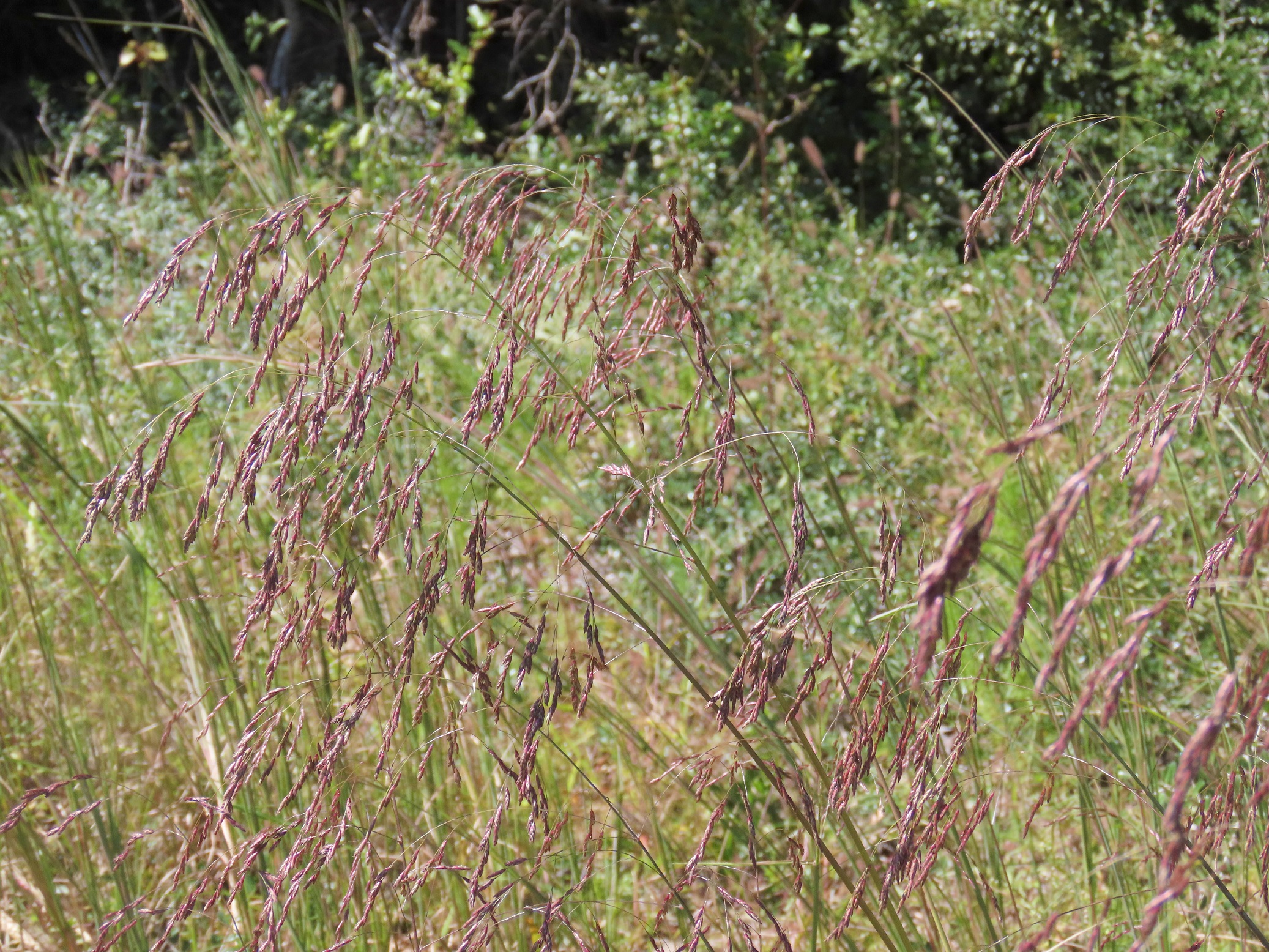
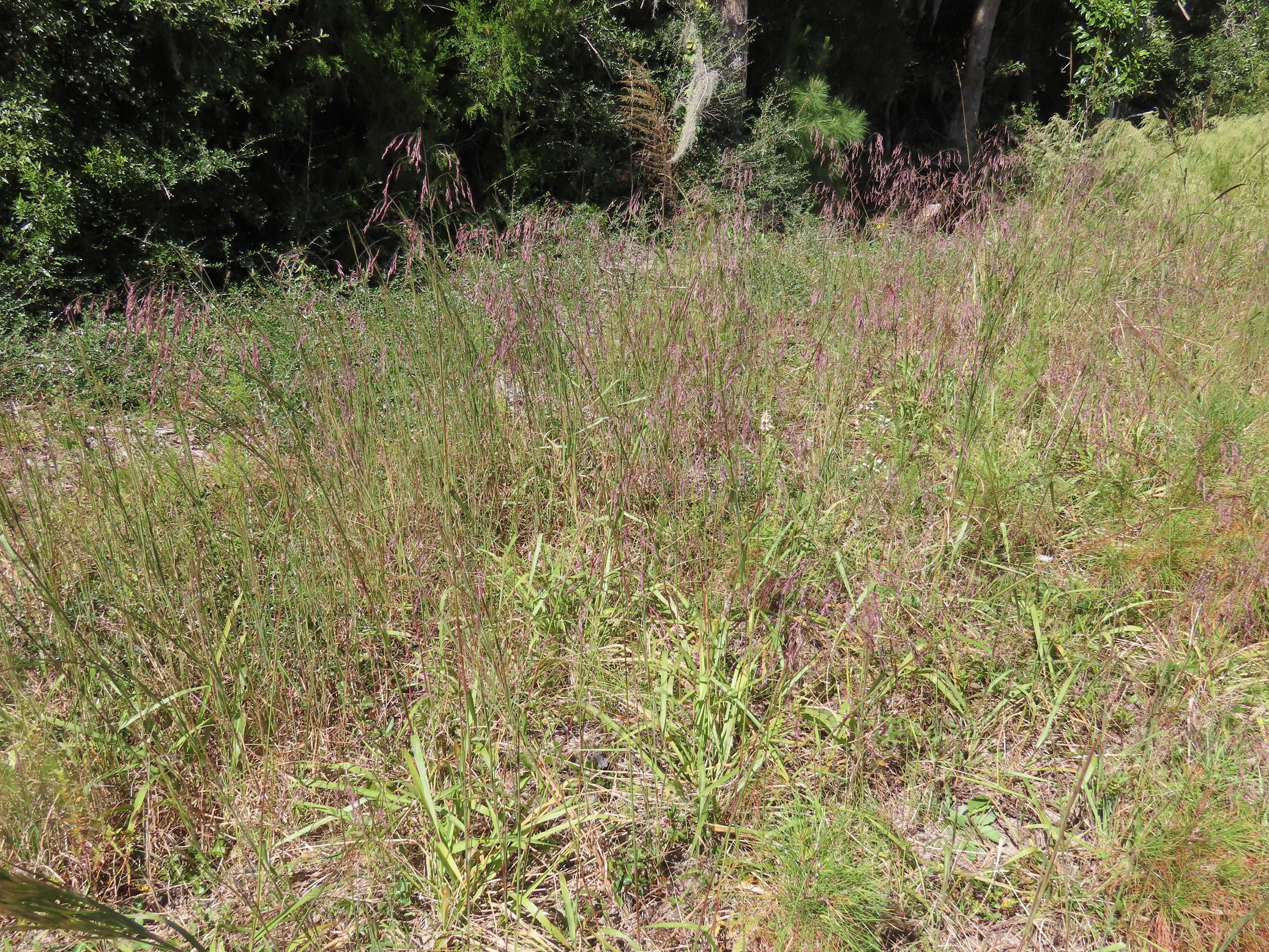
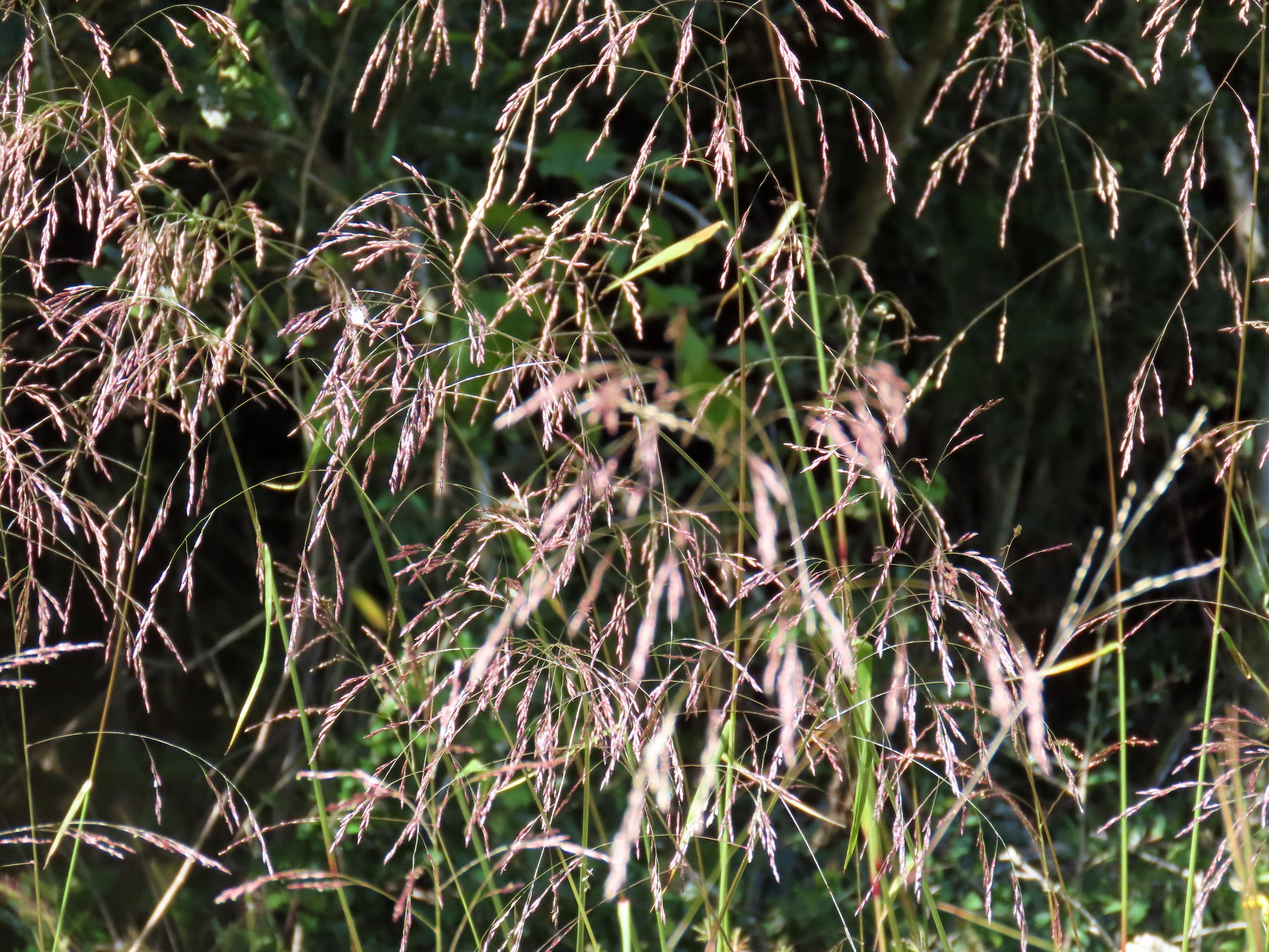
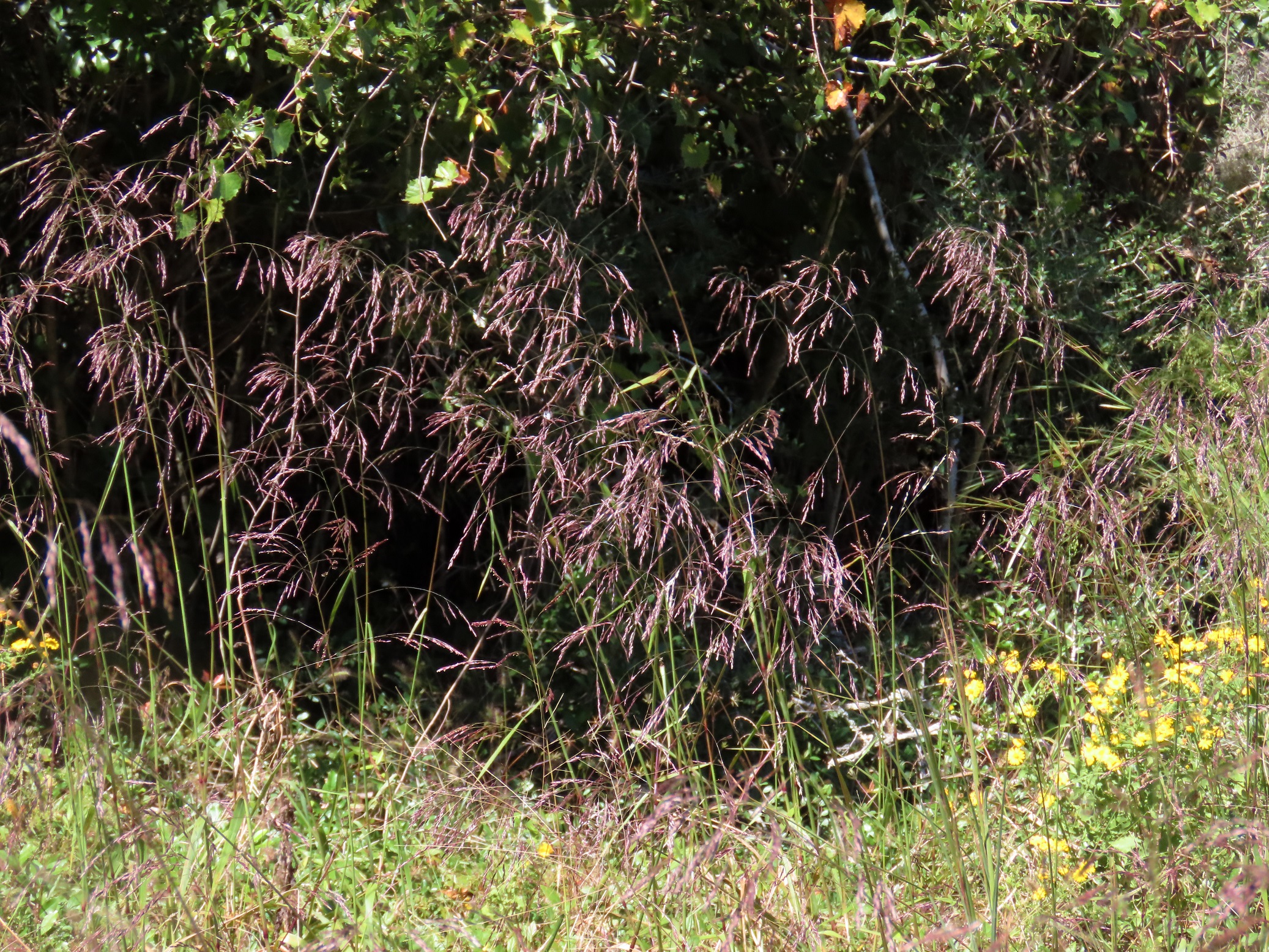
This week for Flora and Fauna Friday it’s the field flown fuchsia floral flag of fall, Purpletop Tridens (Tridens flavus).
Purpletop Tridens is a perennial grass found widely throughout the eastern United States and all of South Carolina. It inhabits open, sunny, sandy areas especially along woodland edges, power lines, and road shoulders. It’s even got mild salt tolerance, letting it grow on barrier islands and in maritime forests. Its leaves grow in long, wide, emerald-green blades up to shin height as singular bunches, sometimes with fringes or flashes of burgundy foliage. Yet, its flowers and seeds are its real namesake. On slender long stalks, reaching from chest to head height, Purpletop Tridens bears a pendulous plume of muted fuchsia seeds, a diffuse arrangement that leans and ungulates in slightest of breeze. Often, many plants grow together within a clearing, creating a midday scene tinted in soft color, reminiscent of a rippling creek bathed in the long red light of sunset. Purpletop Tridens begins to bloom in late August and carries its purple seeds aloft often all the way through November, seeds aging to a pale brass in color with time.
Purpletop Tridens is a warm-season grass, growing and blooming in summer and fall. It’s also a bunch grass, with each plant growing as an individual clump of leaves, rather than producing runners like many of the exotic hay and turf-grasses do. Warm-season bunch grasses are a valuable component of southern grasslands due to the cover, food, and diversity of habitat they provide for wildlife. Growing as bunches, rather than mats, the spaces between these grasses create opportunities for other native plants to grow between the bunches and the umbrella-like shape of the bunch provides indispensable cover to wildlife from the elements and aerial predators, particularly ground dwelling birds like Quail, ground scratchers like sparrows, and a myriad of small mammals and reptiles. The seeds of Purpletop Tridens are high in fat, which grants it its other common name of “Greasegrass” and makes those seeds a nutritious winter food source for rodents and birds. Additionally, Purpletop Tridens is the host plant for a slew of native butterfly species including the Common Wood Nymph (Cercyonis pegala), Little Glassywing (Pompeius verna), and many more of the Grass Skippers of subfamily Hesperiinae. Purpletop Tridens also does well in a garden setting and is a great addition to any native plant friendly lawn.
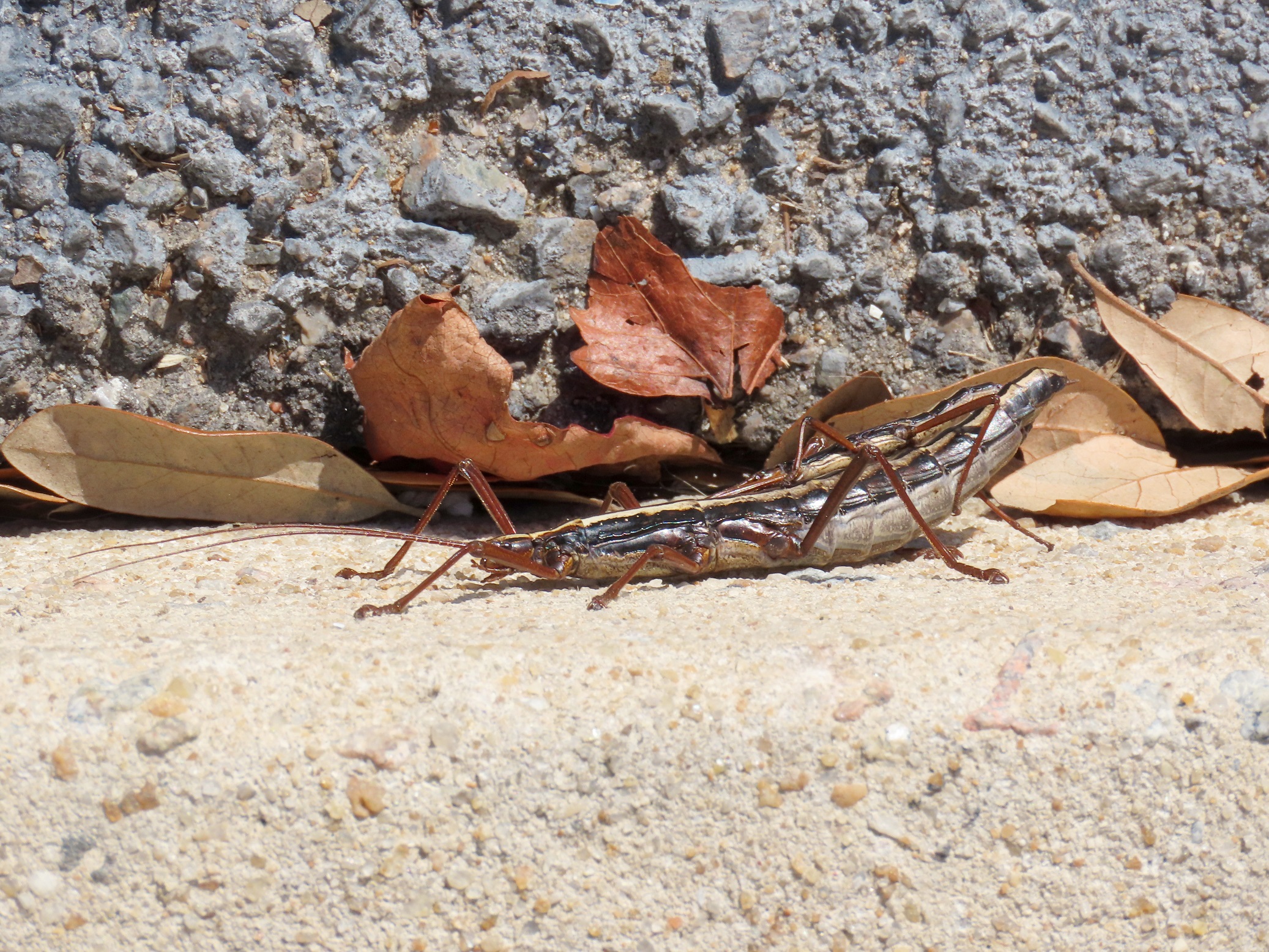
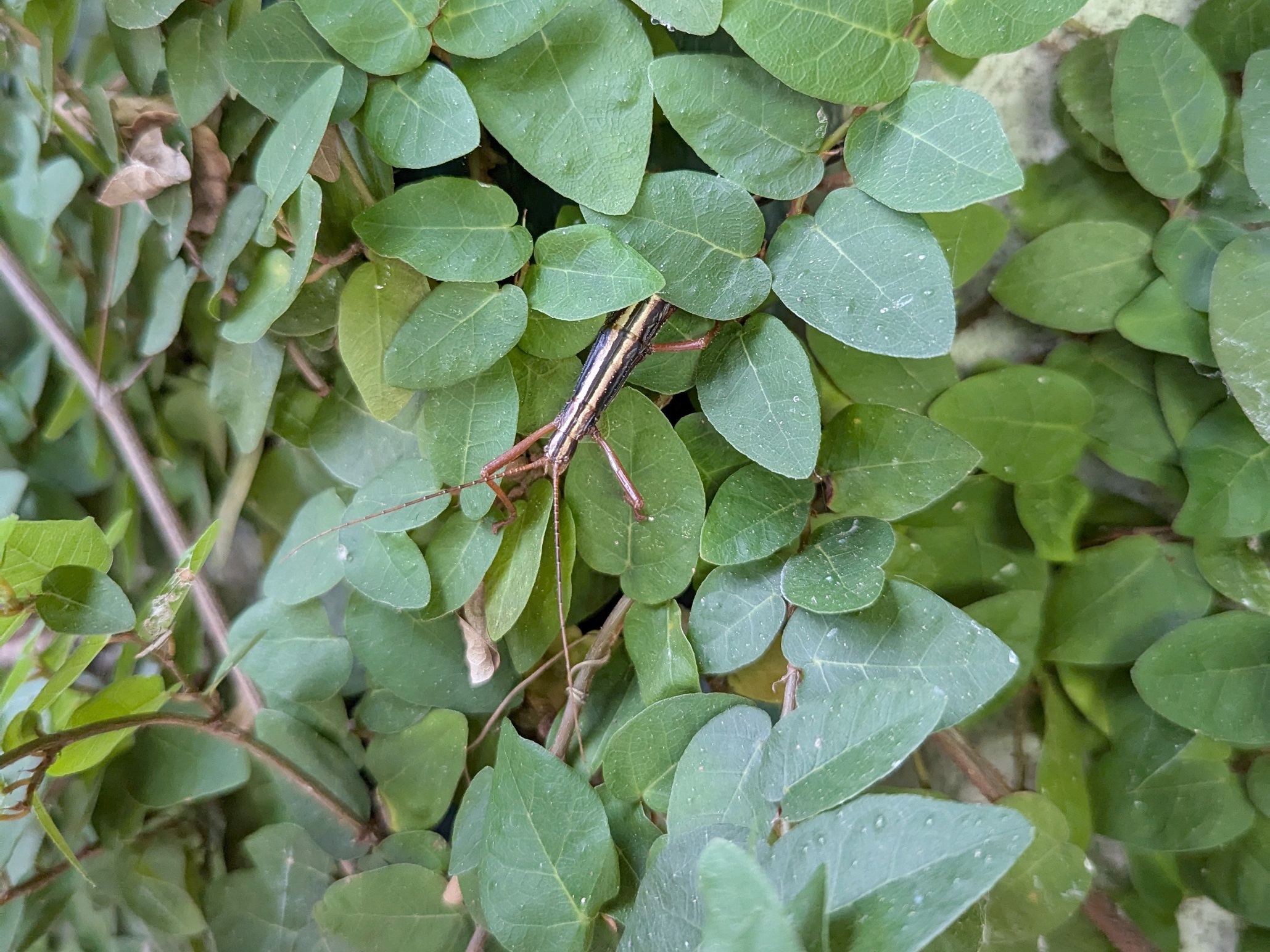
This week for Flora and Fauna Friday, it’s a bean pole of an oversized odd ball bug, the Southern Two-striped Walkingstick (Anisomorpha buprestoides).
Walkingsticks belong to the insect order of Phasmida, which contains only the Walkingsticks, of which we have about thirty species in the United States, only five in South Carolina, and likely just the one here on Edisto Island. The Southern Two-striped Walkingstick is found in the Deep South from Dallas, Texas to Wilmington, North Carolina. This insect doesn’t do well with harsh winters. So here in the Carolinas, it is found sporadically and most often on the Sea Islands and barriers island of our extreme coast, to include Edisto Island. They have a sister species, the Northern Two-striped Walkingstick (A. ferruginea), which is found in the Mississippi River valley east to the Appalachian foothills of South Carolina. The Southern Two-striped Walkingstick’s abundance peaks in late summer and early fall. They are mainly nocturnal and herbivorous, feeding on a wide variety of vegetation in the cover of darkness, preferring to eat the leaves of shrubs and small trees where they can camouflage on limbs and feed out of the reach of most predators.
The Southern Two-striped Walkingstick is an incredibly weird but easy to identify insect. They are a large, long, and finger shaped critter, with females growing in excess of three-inches and males half that. They have a dark, brown to black body with two wide pastel-yellow stripes down the back. We have nothing else on Edisto that looks like them! You also always find this insect in pairs, with the large, heavy female walking and the smaller, svelte male riding on her back. Walkingsticks are also wingless insects, which greatly limits their range and distribution on the landscape. Thus they can be common in some areas but scarce in similar habitats nearby. Which begs the question, how do males find a mate so quickly if they’re scarce on the landscape and can’t fly? In places like Florida where they have dense populations, it’s not an issue to smell out a date and hobble on over. But in the scattered, fragmented Sea Islands of the Carolinas, that’s not the case. It’s a mystery science hasn’t quite answered.
For a final fun fact and cautionary warning, Southern Two-striped Walkingsticks have a unique defensive mechanism. They shoot a liquid poison directly into your eyes. You read that right. They super-soaker toxic chemicals at would-be predators, and curious people. This chemical is sprayed from a pair of glands, just behind their head and at the base of their first pair of legs. It has a range of one to two feet and they’re sharpshooters to boot. This odiferous and noxious chemical functions similarly to pepper spray and serves to repel mammals, birds, reptiles, and arthropods. For humans, if it gets in our eyes or mouth it causes instantaneous, excruciating pain. This pain dissipates over a few hours and is followed by acute irritation and sometimes partial blindness for the next day or two. Although it’s quite rare for a Walkingstick to take a potshot at your pupils, as they prefer to just sit there and hide, maybe don’t pick this one up!
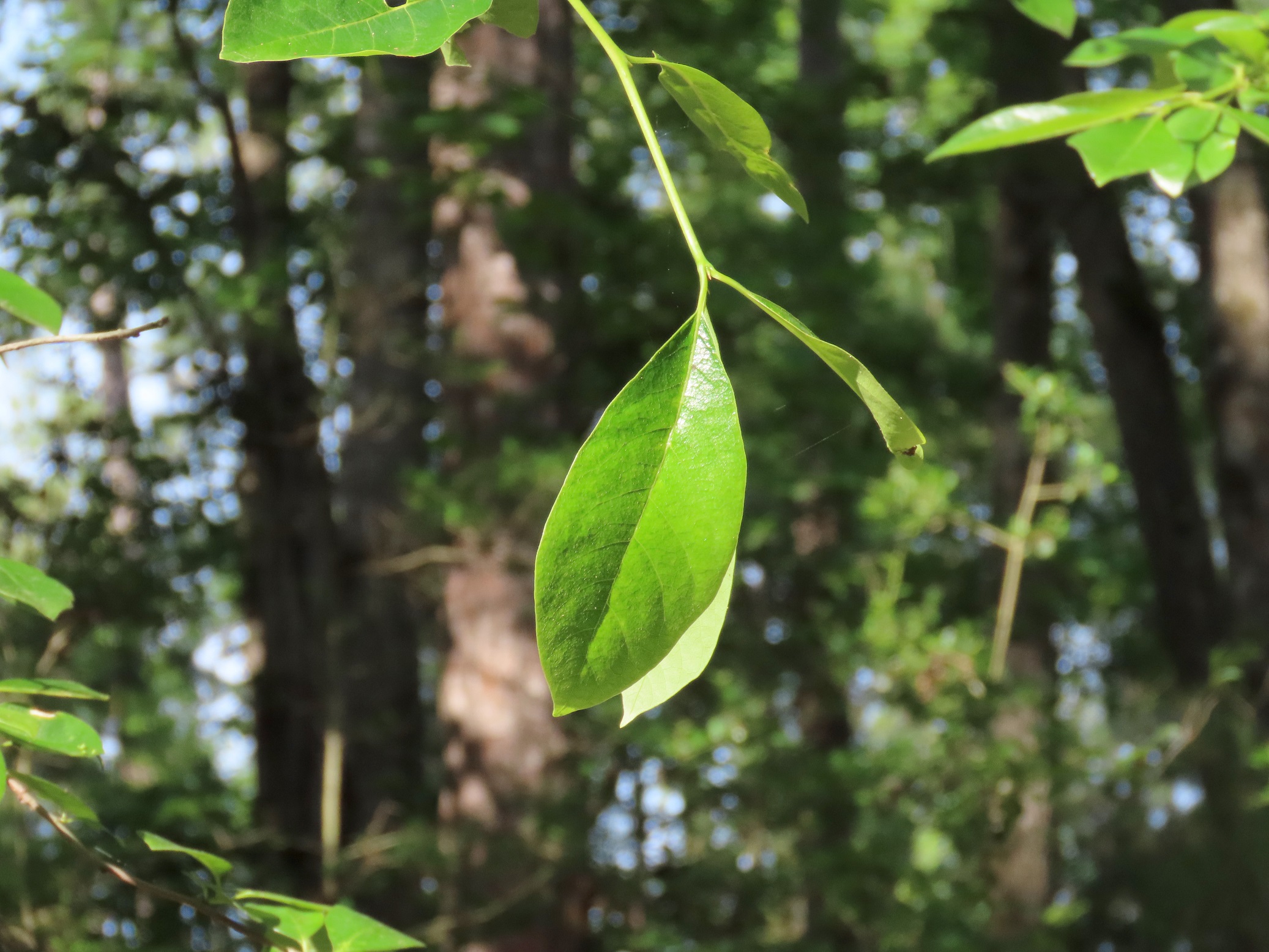

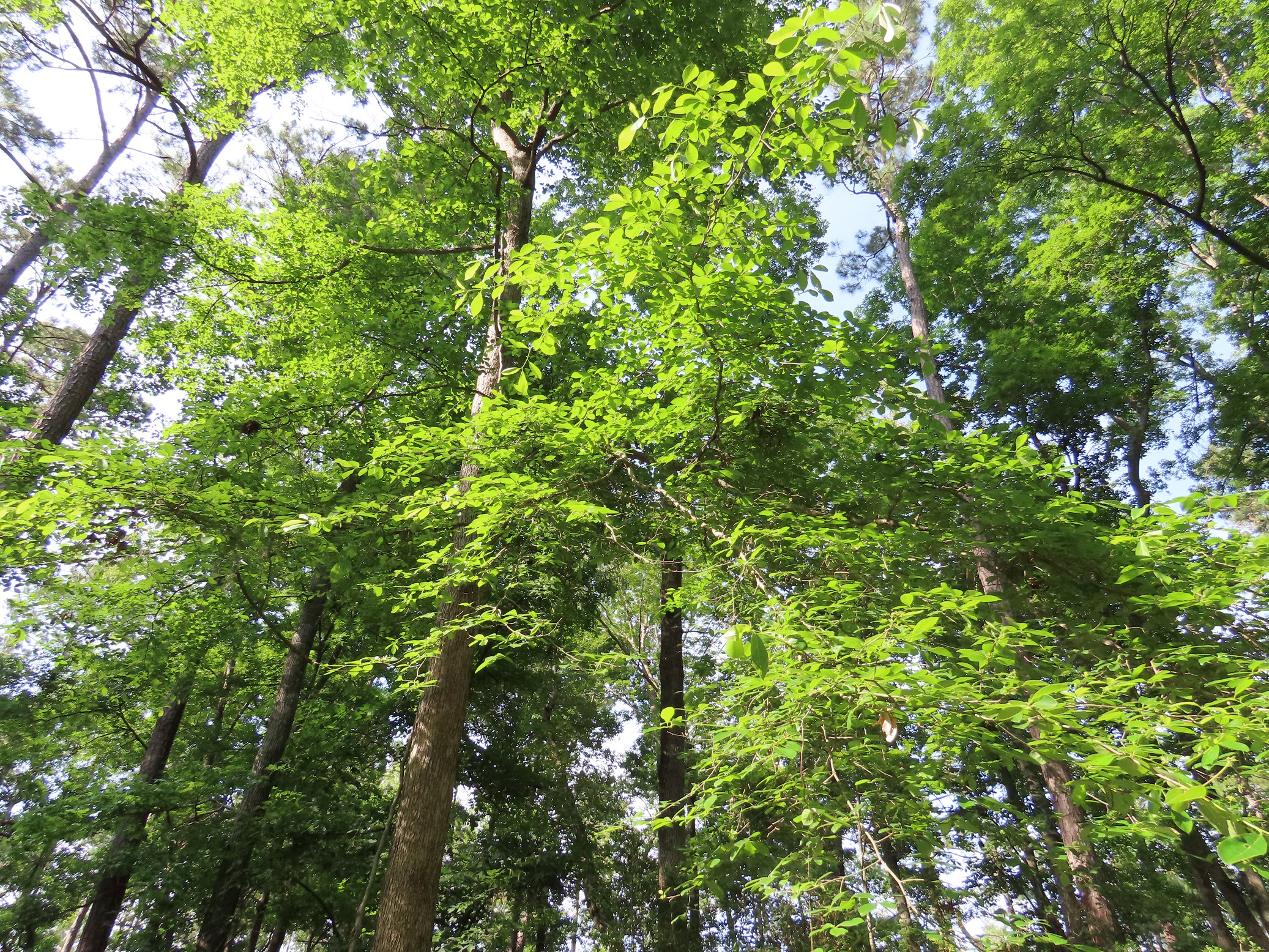


This week for Flora and Fauna Friday it’s a little known midstory tree with flashy fall foliage, the Black Gum (Nyssa sylvatica).
Black Gum is a small tree found widely throughout the Eastern United States yet it is never a dominant forest tree, neither in height nor abundance. Throughout most of their range, Black Gums can be found growing on moist uplands soil but, here in the Lowcountry, they can be found just about anywhere that’s not a marsh or a bottomland. It also has a similar sister species, Swamp Black Gum (N. biflora) which is found in bottomlands and other saturated wetland soils. Black Gum grows to about forty feet in height with a straight trunk and narrow crown, often staying in the midstory and margins of forests. It has a few key characteristics that make it straightforward to identify year-round. In winter, its pale gray-white bark is lightly furrowed and flaky, making it easy to spot at a distance. Closer up, its thin, wiry stems and branches held sharply perpendicular to its trunk give a quick identification to this deciduous tree when leafless. Come spring its leaves emerge, alternately arranged, finger length, deep green, and simple with an obovate shape, making them widest two-thirds of the way to the leaf tip. Come the end of summer, Black Gum sets fruit, producing a bounty of small, egg-shaped, blue-black drupes about the size of blueberries. Yet, fall is when this tree truly stands out. Amidst the evergreen forests of the Sea Islands, Black Gum blazes like a torch in the night. Their crown of foliage begins its color change the end of October, burning into an incandescent beacon of deep scarlet-red. This makes Black Gum one of the very few native trees on the Sea Islands with a fall foliage display.

But Black Gum isn’t just pretty to look at. It’s also wonderful for wildlife! The spring flowers of Black Gum, although tiny, green, and inconspicuous are adored by both native bees and honeybees. The honey those bees produce from Black Gum flowers is highly prized for its flavor. The fruits of Black Gum are also a sought after snack for migratory birds, like Catbirds and Robins, and local residents, like Blue Jays and Mockingbirds. When those fruits hit the ground they provide food for raccoons, turkeys, quail, foxes, rodents, and other mammals. These tart little fruits are edible for people too, and quite tasty! A final fun fact, fresh Black Gum foliage is one of the White-tailed Deer’s most desired browses. This makes Black Gum valuable to land managers for habitat improvement practices like hinge cutting, which brings a trees canopy down to deer level while creating cover for critters to hide in, and a relatively new practice of “mineral stumping”. When most hardwood trees topple over, break off, burn up, or are felled during logging, they will rapidly put out new growth from their roots, making a beeline for the sky. When a tree does so, it mobilizes nutrients, proteins, and sugars that it’s been storing up in its roots. The tree concentrates all that nutrition from a huge root system into just a very small volume of foliage, making those leaves a temporary superfood for herbivores like deer and livestock. This phenomenon has been dubbed a “mineral stump”, turning a native tree into an all-natural mineral lick and feeder in one. This process also happens naturally on the landscape during prescribed fires and wildfires, to which Black Gum has naturally adapted with a response to go for broke and get up out of the range of deer as fast as it can. Meaning for Black Gum, this mineral stump effect is very strong, and the deer come running for the delicacy!
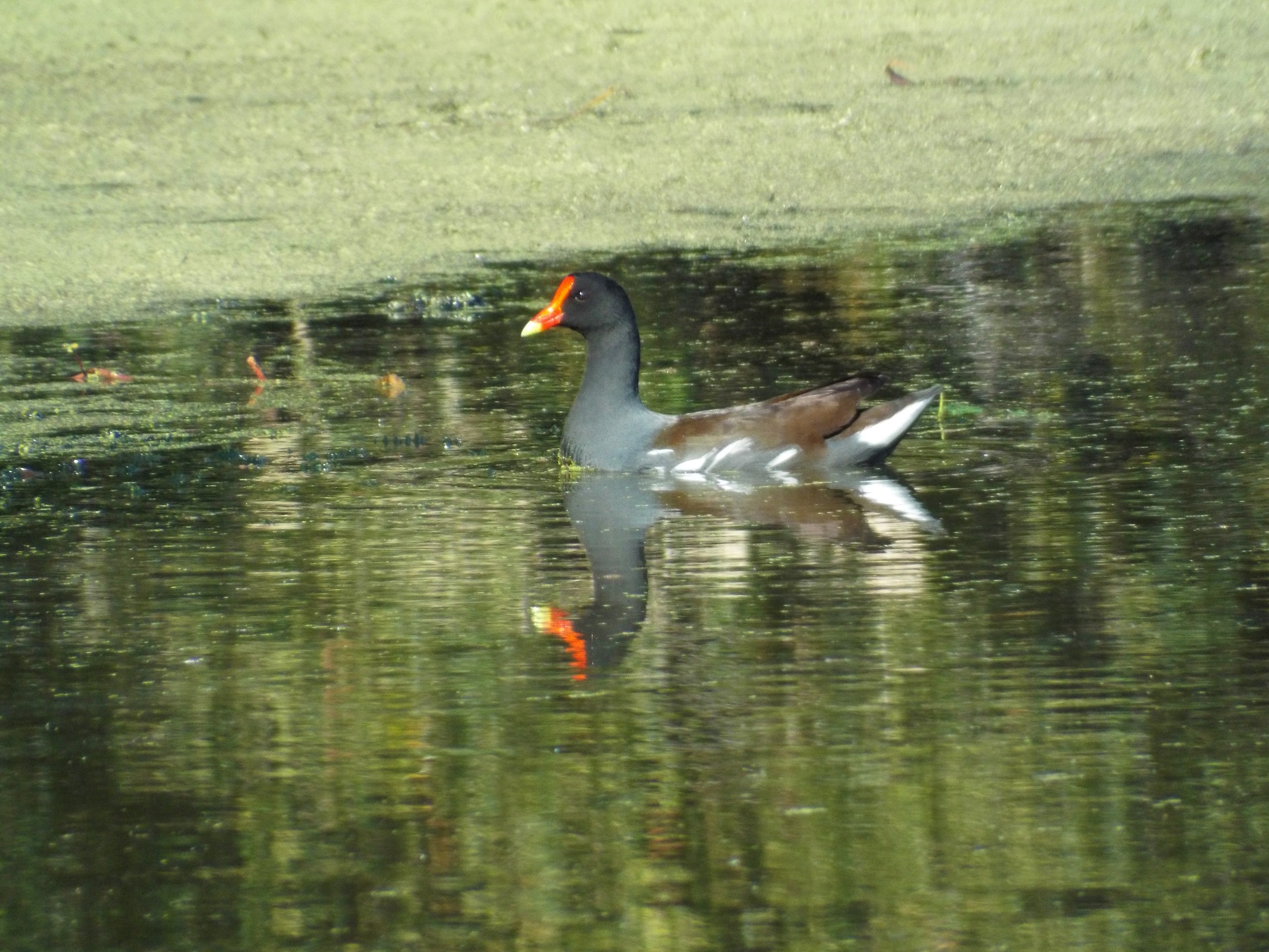
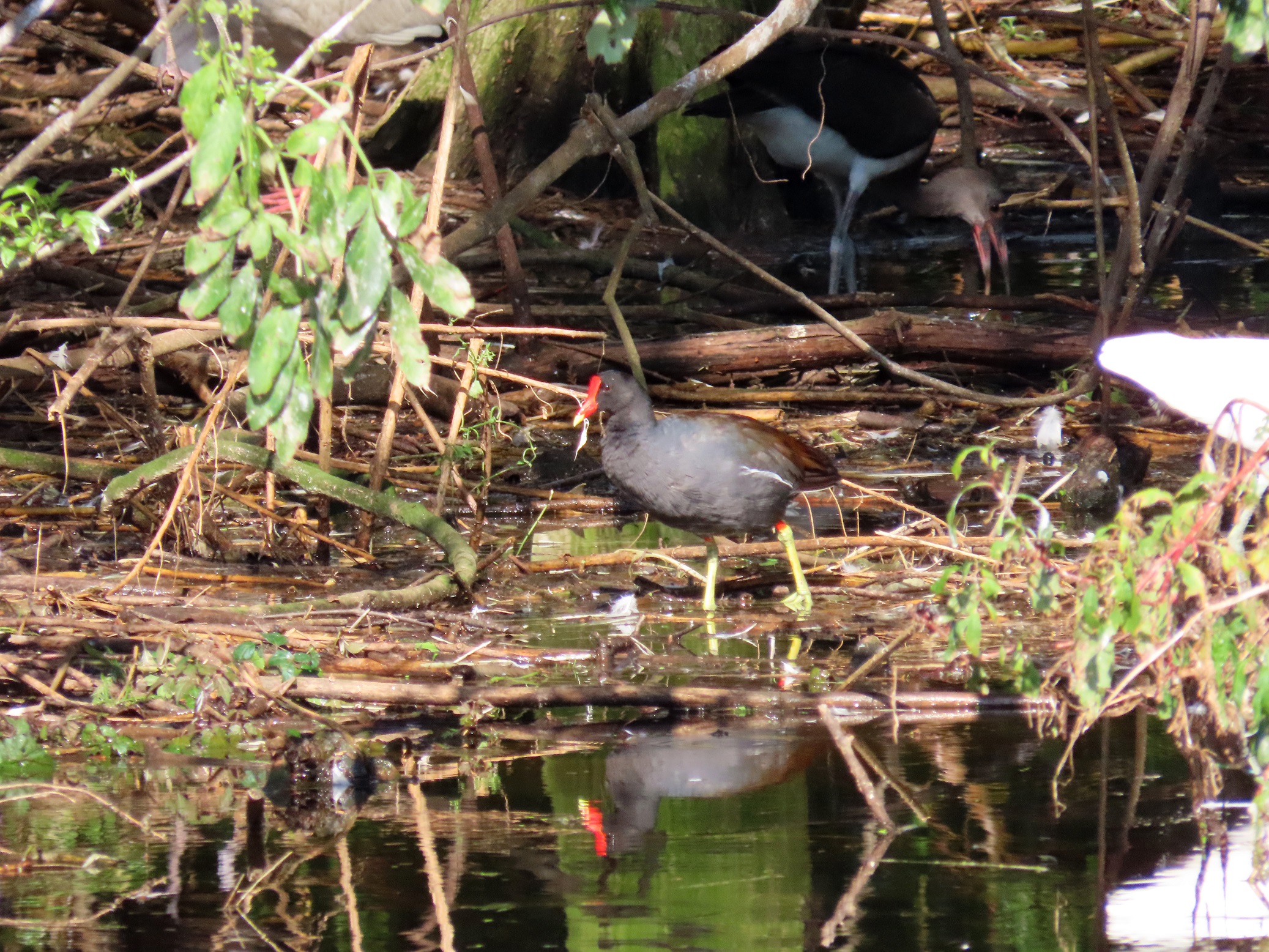
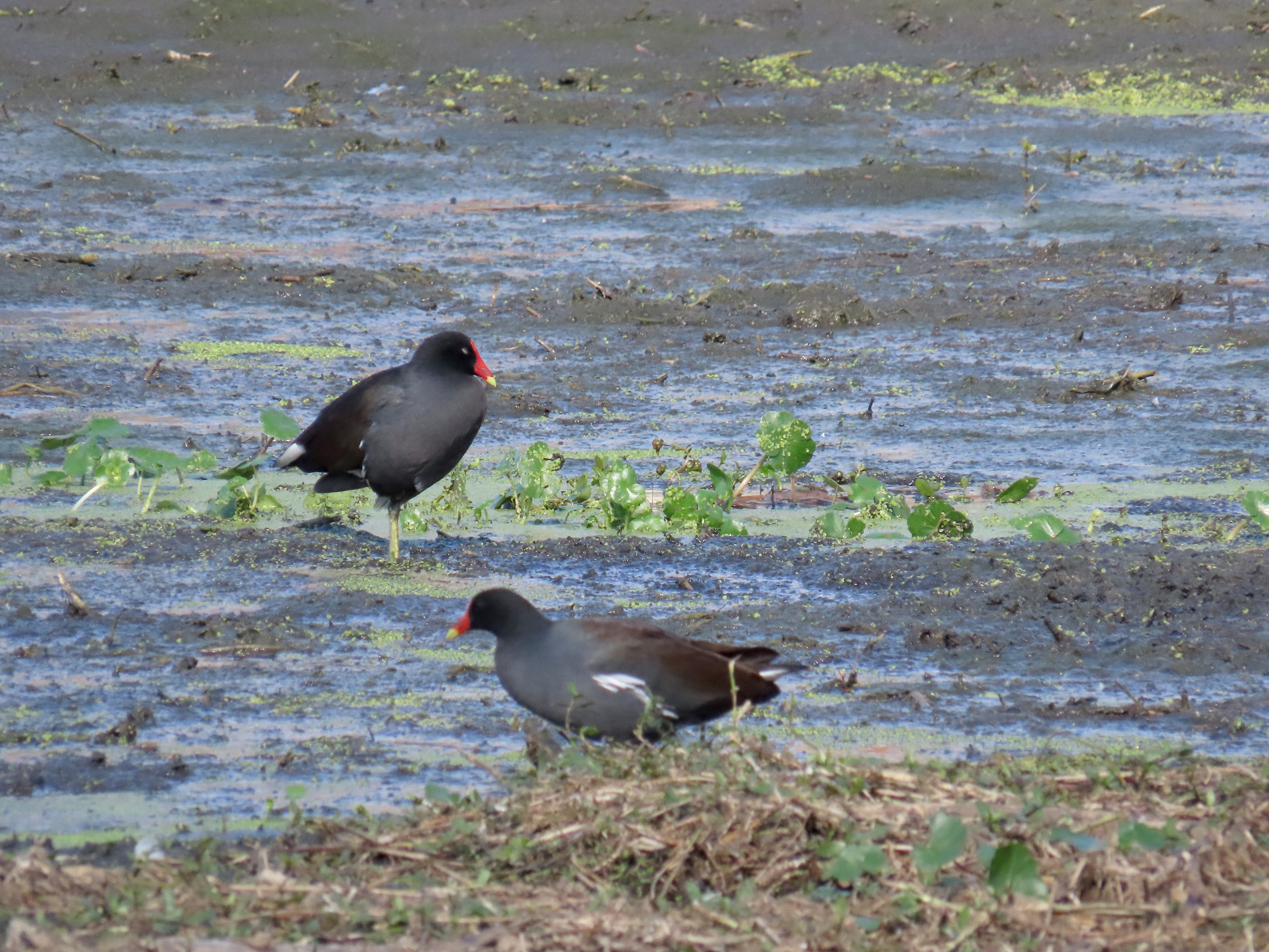
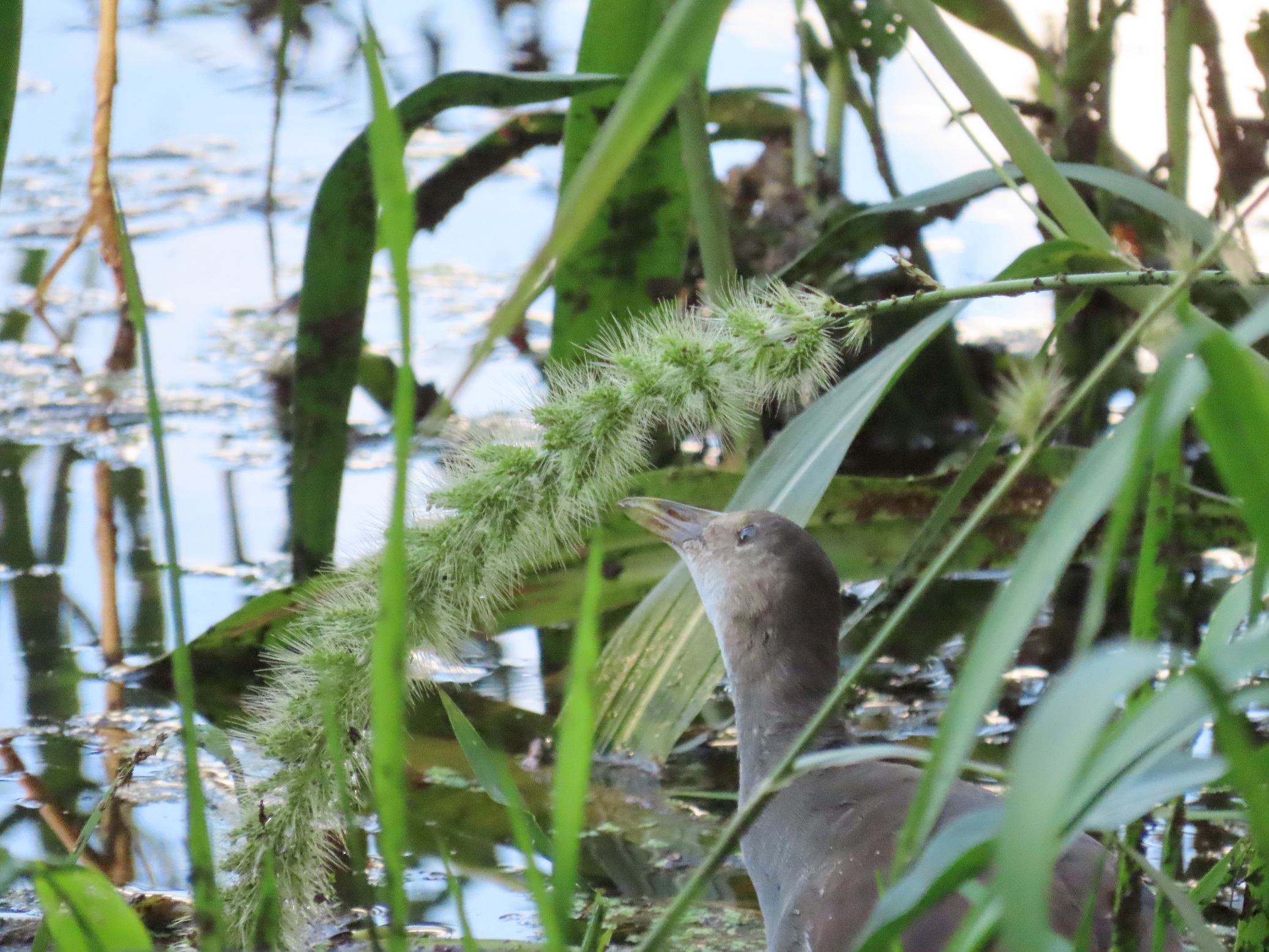
This week for Flora and Fauna Friday it’s the maniac of the marsh, the hysterical hen of the moor, the Common Gallinule (Gallinula galeata).
The Common Gallinule, also known as the Common Moorhen, is a curious bird found year-round in the Lowcountry of South Carolina. They inhabit shallow, still, densely vegetated freshwater and brackish wetlands. They’re especially common in rice fields, tidal impoundments, and weedy ponds where they forage along the margins between marsh reeds and open water for seeds, arthropods, and aquatic vegetation. Gallinules are just as apt to tread open water as they are to walk along shorelines, clamor over hummocks, or weave between reeds. The Common Gallinule is duck-like in character but, don’t let that fool you. It’s actually a member of the Rail family, Rallidae. Like other Rails it has a stocky body, a neck that’s longer than it looks, and sturdy, long legs. Common Gallinules have a pretty generalist lifestyle for a Rail. That makes them one of our more numerous Rail species in the Lowcountry and definitely the easiest Rail to lay eyes on!
The Common Gallinule’s plumage is a matte blue-black across much of its body, which blends into a rich walnut-brown on the wings. This dark, muted plumage is contrasted by a white streak down the flank and white undertail feathers divided by a black central streak. Atop their head is a scarlet-red bill bleeding up into a uniform red shield on their forehead and tapering down to the bone-yellow tip of their short, sharp, and stout bill. Holding up their bulky body are long, robust, and chartreuse-green legs which extend, uncannily, into slender toes as long as their shins! Common Gallinules use these elongated toes both as snowshoes for walking over soft mud and floating vegetation as well as paddles for poling across shallow water. Common Gallinules have two similar looking and closely related species here in South Carolina, the scarce Purple Gallinule (Porphyrio martinicus) and the prolific American Coot (Fulica americana). Purple Gallinules are quite similar in appearance to Common Gallinules but prefer freshwater ponds with dense mats of floating vegetation. They have yellow legs, iridescent plumage that blends from indigo-blue to green, and a sky-blue shield on their forehead. American Coots prefer more open waters and lakes where they flock in rafts. Coots are also solid black on the body, with a heavier neck and head, a white bill with a black tip, and lobed toes. Common Gallinules, alongside their Purple and their Cootish cousins, are gamebirds in the state of South Carolina with hunting seasons in fall and winter.
Common Gallinules have many curious behaviors. Firstly, their calls are like nothing else. Gallinule calls are like the cackling laughter of a mad man, a maniac floundering in the marsh. Often it begins as a horse-like whinny or a dry chuckle that slows into a choking, chortle of harrowing, unhinged laughter. Other times only single, simple utterances are barked, squeaked, groaned, or cooed with a lonely echo off the water. Like many Rails, Common Gallinules have a triangular tail with white undertail feathers, which they oft flick. This behavior serves as a signal of danger; both to the other birds in line of sight and to the would-be predator, letting everyone know that this bird is aware it’s being watched. Conversely, when startled, Gallinules take explosive action. Rather than flying up and away like a duck or diving out of sight like a grebe, Gallinules bust out into a sprint! They flail their wings rapidly to lift their tubby frame off the water as they make a mad dash towards the nearest clump of cover, slapping their long toes to run across the surface of the water.
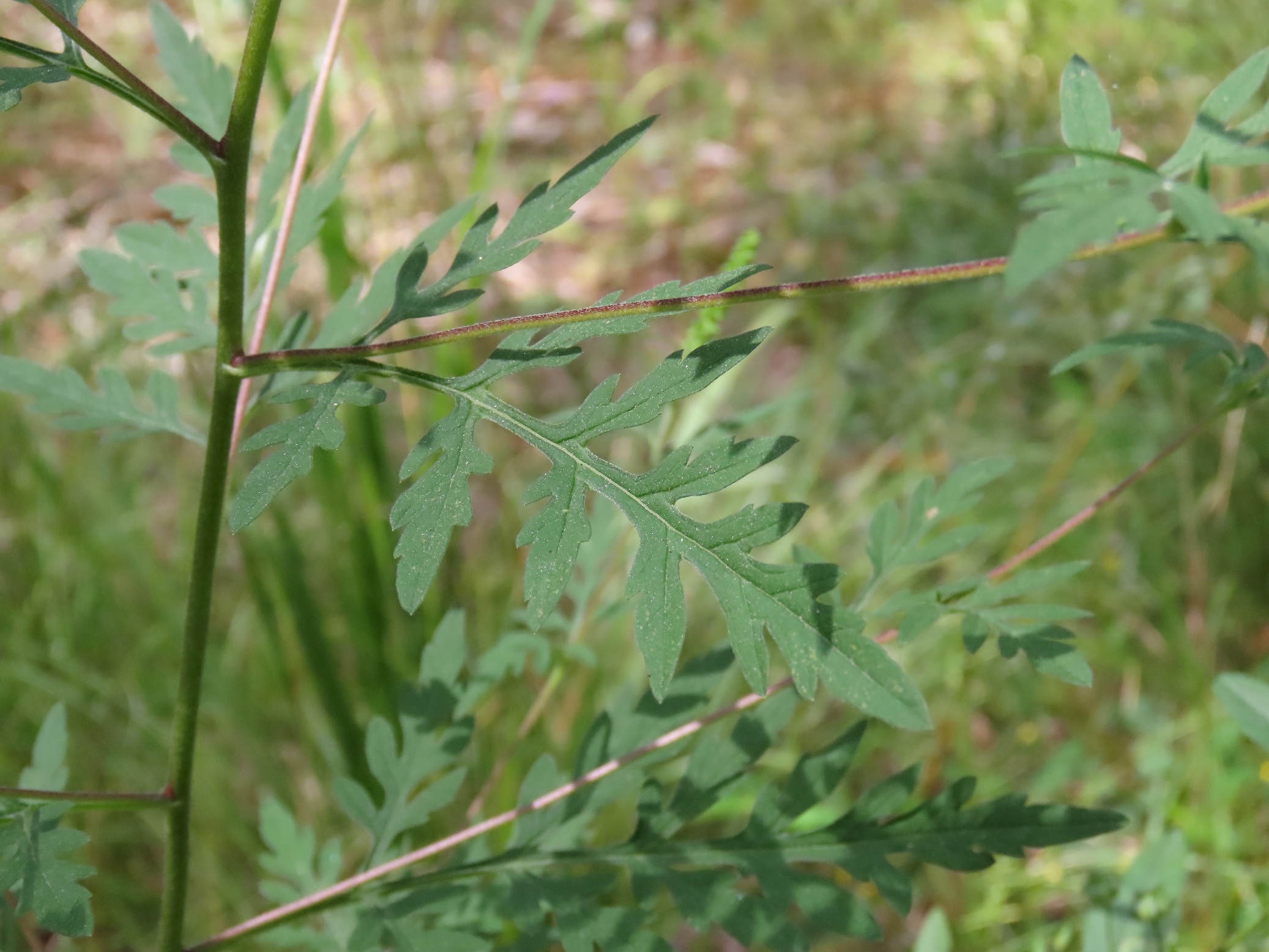
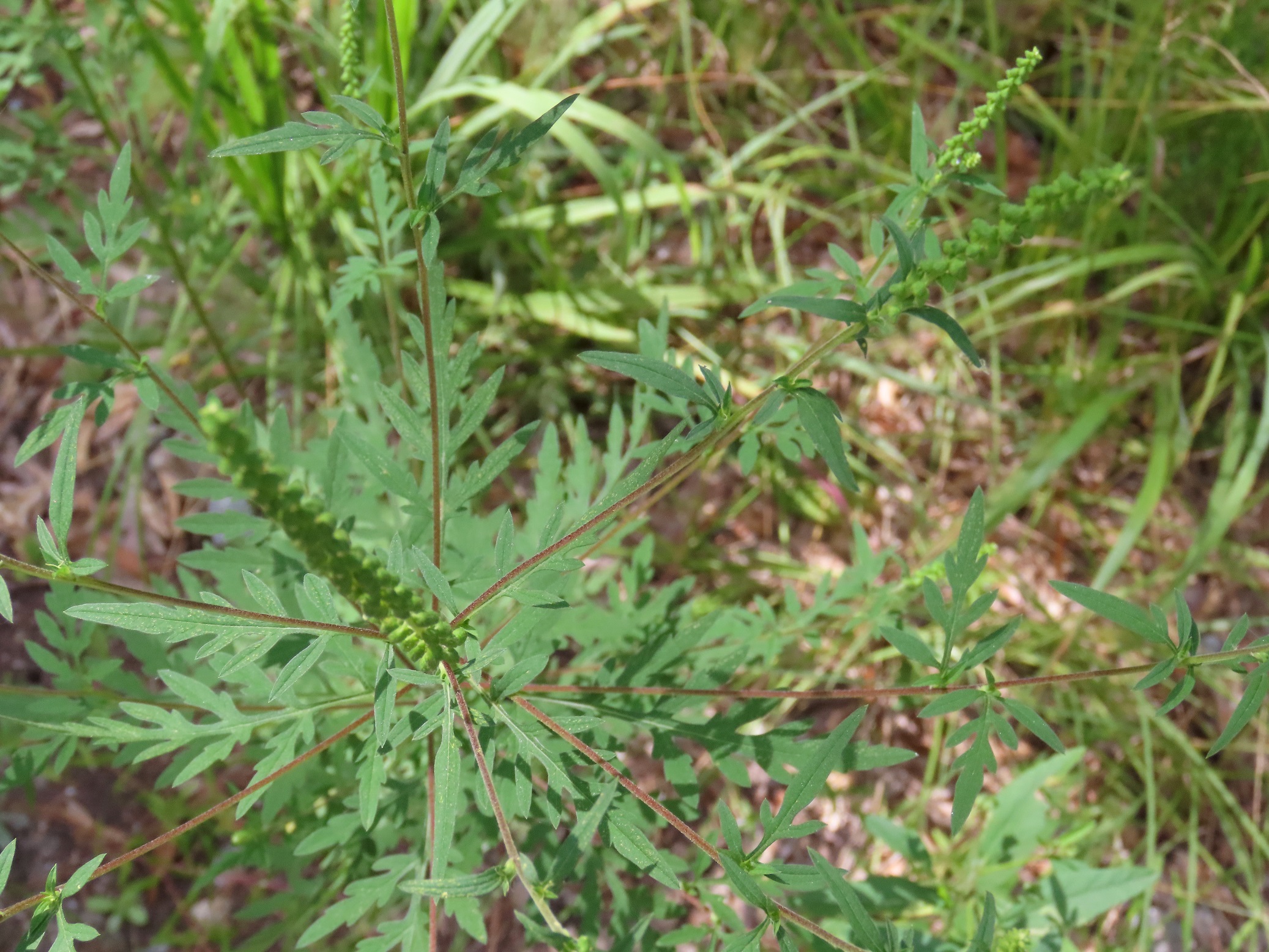

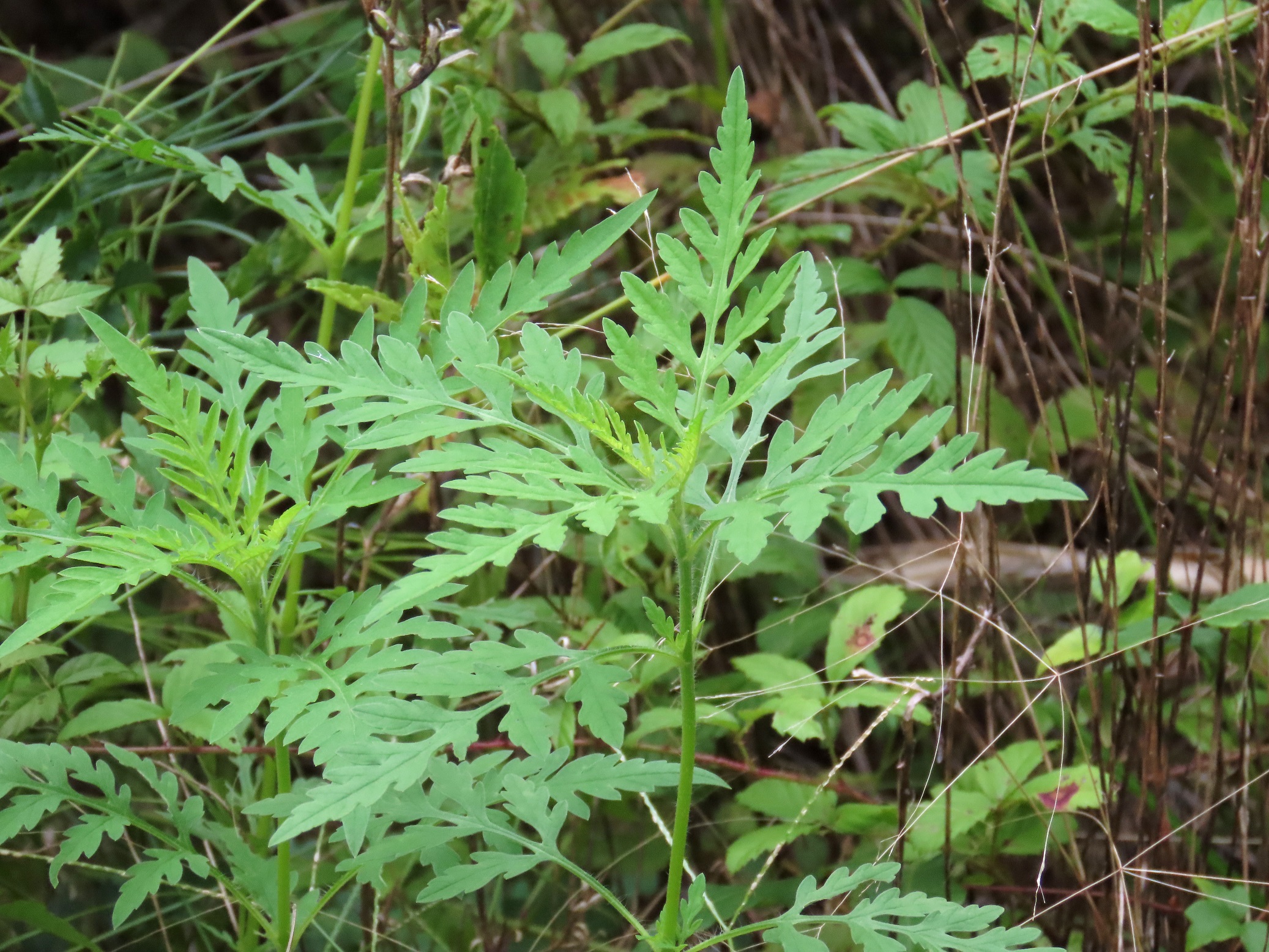
This week for Flora and Fauna Friday it’s the furtive forb, the secret sneeze-maker, Common Ragweed (Ambrosia artemisiifolia).
Common Ragweed is a prolific annual herb found across the Eastern United States and all of South Carolina. It’s an abundant component of prairies, savannas, meadows, fields, power-line clearings, roadsides, and practically all open and disturbed upland soils. In appearance, Ragweed is a leggy herbaceous plant, growing waist to chest-high as a norm with wide-held and sparsely foliated branches. It gets its common name of “Ragweed” from its oppositely arranged, ragged, finely divided leaves, which have something between a fern-like shape and the form of a wind-tattered flag. Ragweed is an incredibly inconspicuous plant, blending in seamlessly into the seas of green found in any vegetated clearing. It takes a trained eye to even know it’s there, but it almost always is!
The things Ragweed is best known for, infamous for even, are its flowers, more specifically its pollen. Common Ragweed is a wind pollinated plant. Rather than bribing bees to carry its pollen from one plant to the next, it uses the tried and true strategy of saturating the air waves in pollen granules. Common Ragweed flowers are a tiny green blob with a cream-yellow tip born on long slender spikes held aloft at the tips of its stems. These flowers sway in the subtlest breeze, shedding pollen while collecting it from off. Many clades of plants, like oaks, pines, hickories, and grasses, use wind pollination quite successfully. Yet a key difference with Ragweed is that its pollen is one of the most allergy-inducing of the botanical world and is the chief instigator of “Hay Fever” in the United States. One of the great shames of this infamy is it obfuscates the many wonderful wildlife benefits of Ragweed and the blame for seasonal allergies often gets unduly assigned to a different workhorse wildflower, Goldenrods.
As a quick aside, many Goldenrods, genus Solidago, grow in nearly identical habitats to Common Ragweed and their bloom period syncs up closely with Ragweed. Both are members of the Sunflower Family, Asteraceae, but Ragweed is the odd duck here being wind pollinated. Most of the Asterids are insect pollinated, this includes Goldenrods. Insect pollinated plants have showy, colorful flowers to advertise to insects and, as a consequence of their symbiosis with insects, don’t shed allergenic pollen. Their pollen is heavy, clumpy, and sticky so it can adhere only to the pollinating insects that visit their flowers. So a good rule of thumb is that, if a plant has big or colorful flowers, it doesn’t cause seasonal allergies. Ragweed, on the other hand, sheds pollen freely into the wind like smoke off a fire.
Ragweed, despite the respiratory aggravation, has many benefits in our Lowcountry ecosystems. Common Ragweed foliage is one of the most nutritious and protein rich forages around for Deer, Rabbits and other herbivorous wildlife. Ragweed is especially good at growing quickly on disturbed and nutrient poor soils, providing much needed food and overhead shelter to turkey, quail, sparrows, deer, mice, and other wildlife all while cycling nutrients up from the soil to make them available in damaged environments. The seeds of Common Ragweed, although small, are an incredibly sought after winter food source for sparrows, quail, and other prairie bird species. It’s even known that Native Americans once cultivated a different Ragweed species, Giant Ragweed (A. trifida) which is found in the SC upstate, as an oil and protein rich food grain before fully transitioning to corn as a stable grain crop.
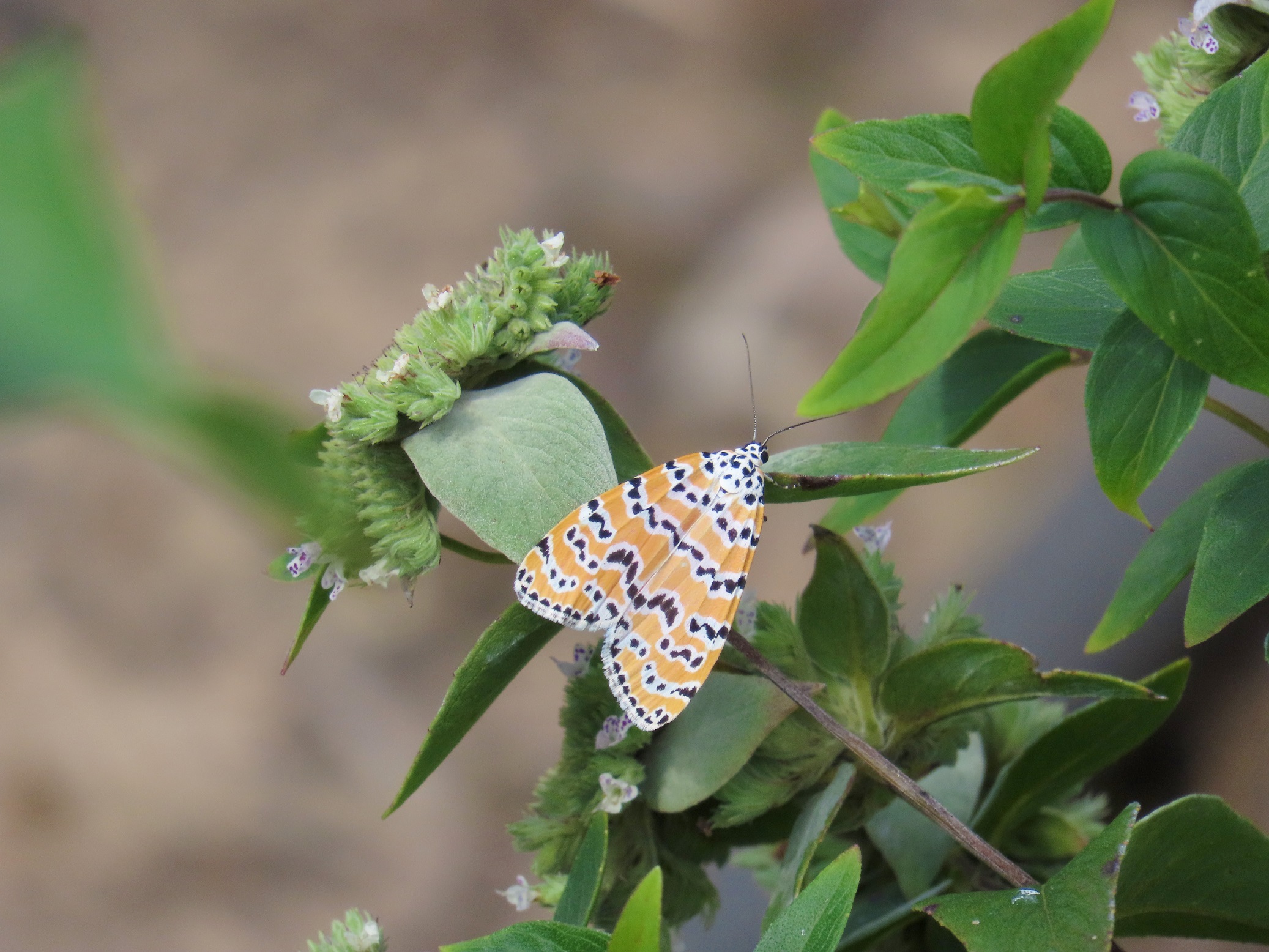
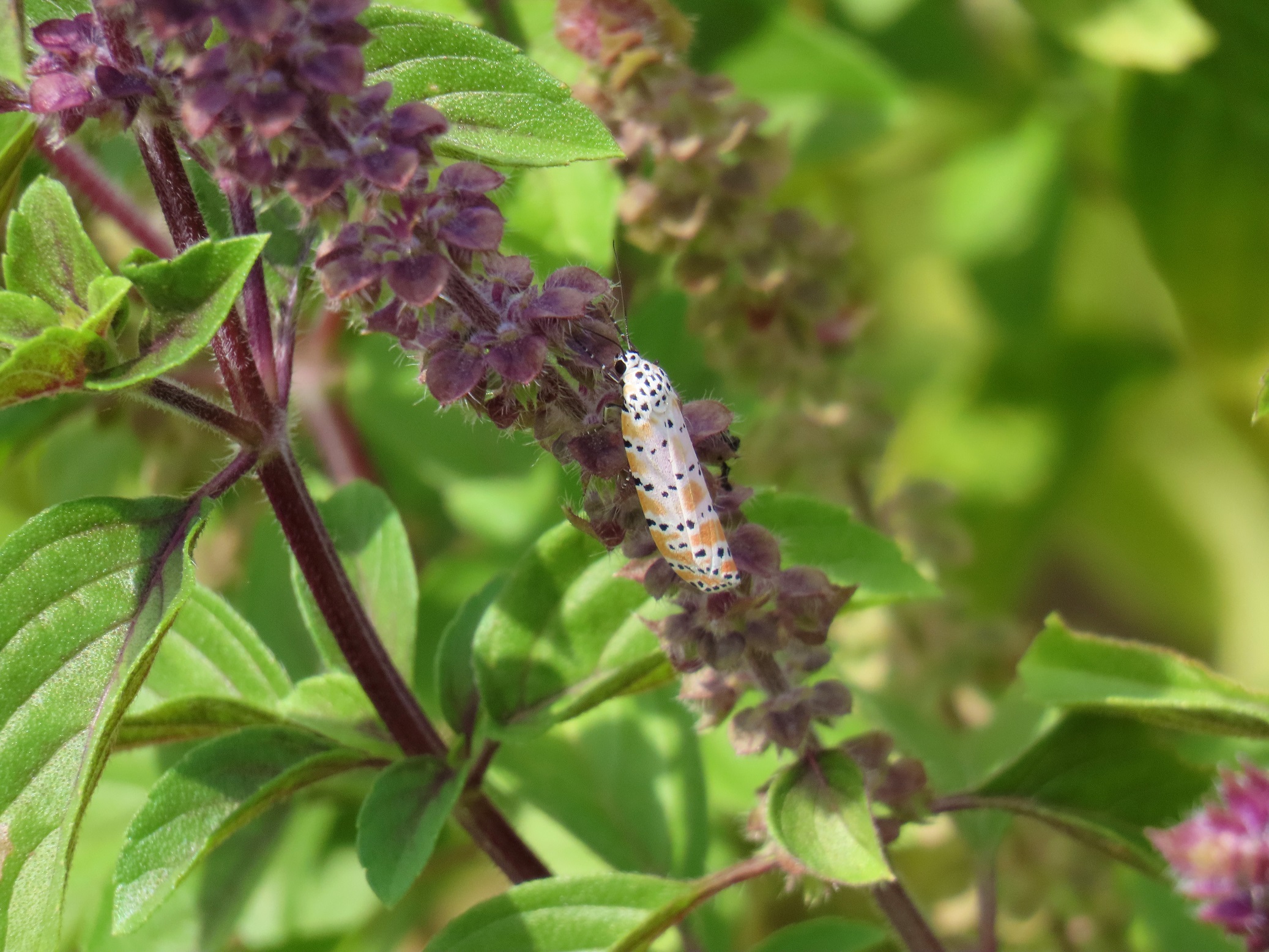
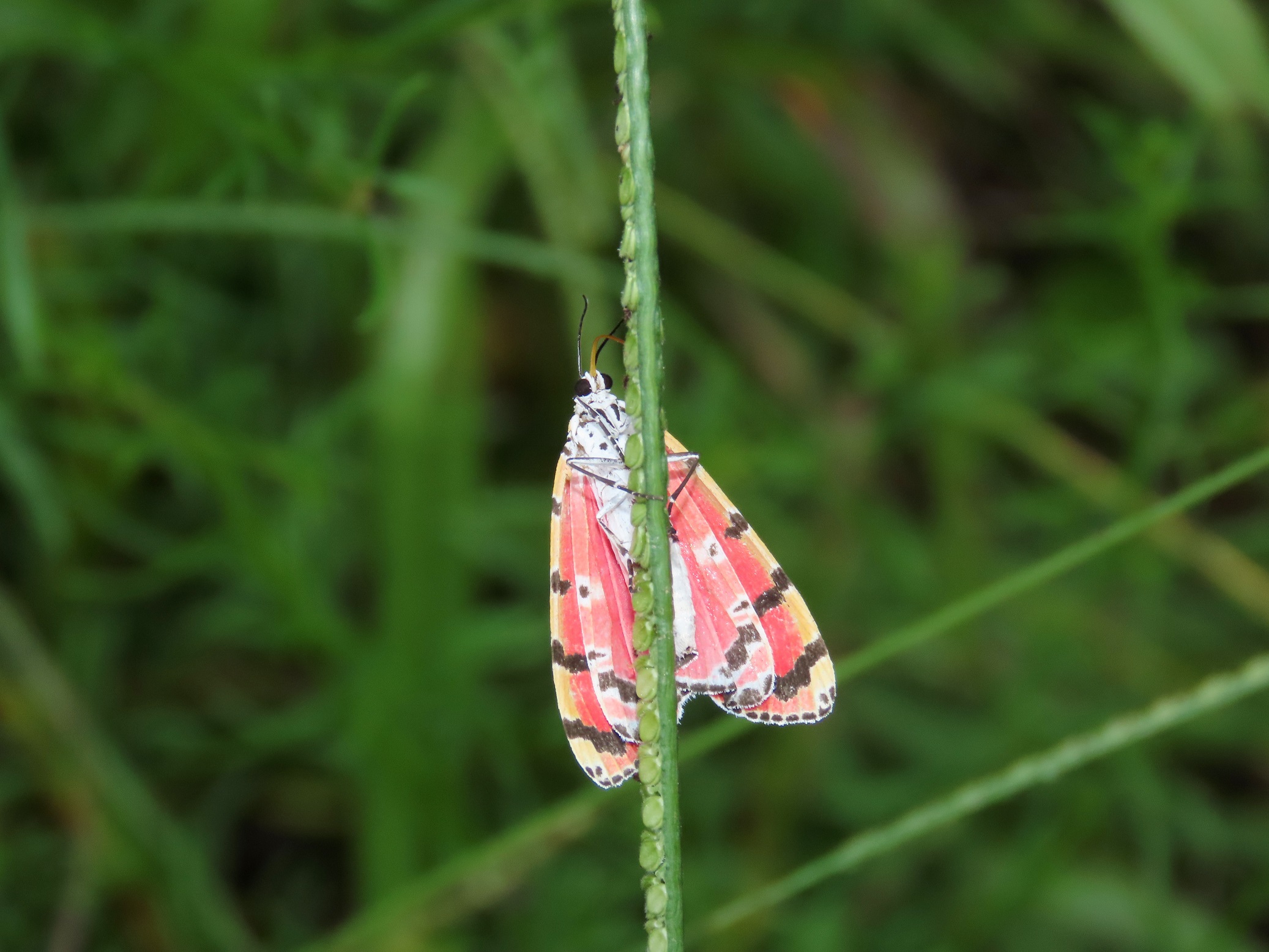
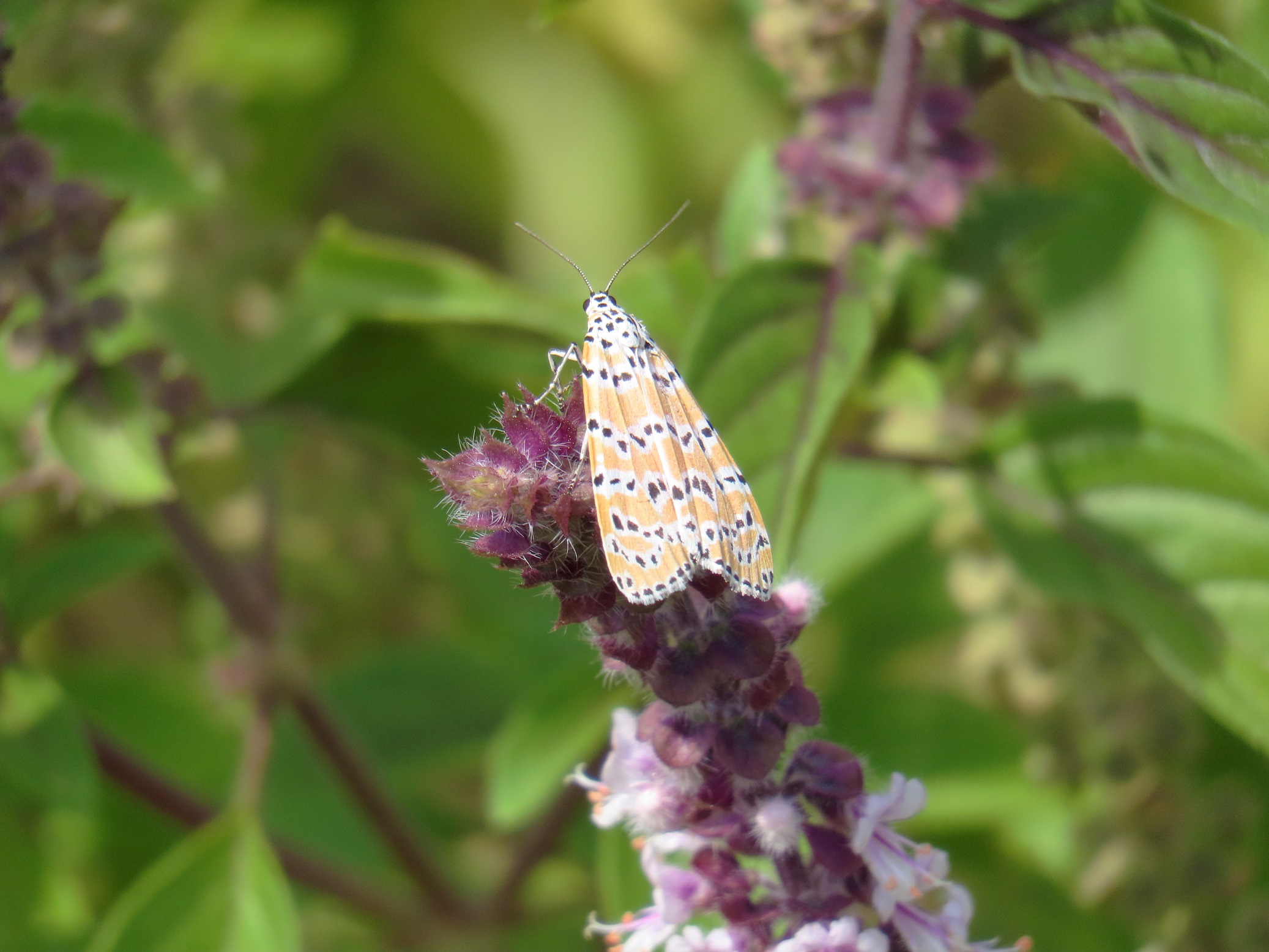
This week for Flora and Fauna Friday, we have a stunning diurnal moth of our southern grasslands, the Ornate Bella Moth (Utetheisa ornatrix).
When out stomping through a savanna or fording the sea of grass in an overgrown field, you might be pleasantly surprised to find yourself escorted by fluttering flashes of pastel-pink hovering about your knees, bounding between stems and hiding out of sight. That’s the unmistakable presence of our Ornate Bella Moth. The Ornate Bella Moth is our only species of Bella Moth in the United States and can be found throughout South Carolina. They inhabit old fields, roadsides, power line clearings, savannas, sand barrens, and other open weedy areas. There they hang around their host plants, Rattlebox (Crotolaria spp.), and can make use of both the genus’s native species and its introduced exotic species. The Ornate Bella Moth is a narrow, wedge-shaped moth about three-quarters of an inch long with a distinct head and thin, wiry antennae. Their forewing is colored a soft pastel-orange above broken by a half-dozen bands of white, each containing a chain of small black spots. Beneath the forewing they are hot-pink with black tiger-stripes, a striking color that grabs your attention in flight. Ornate Bella Moths can be found around Edisto Island almost year-round but are most abundant in early fall. Adults drink nectar and pollinate flowers.
The Ornate Bella Moth is notable for being one of the Lowcountry’s few showy and diurnal species of moth. Bella Moths belong to the Tiger Moth tribe, Arctiini, and share many of the common features of this group, particularly their highly contrasting color patterns. However, most Tiger Moths are nocturnal. Most moths in general are nocturnal and, as a consequence, most are cryptically colored, both to avoid being seen when hiding during the day and because flashy colors don’t do you much good when no one can see you. The Ornate Bella Moth has taken a page out of the butterfly book instead to become both colorful and a day-flyer.
Butterflies, which are technically moths (order Lepidoptera) but form a distinct and recognizable superfamily (Papilionoidea), have taken a very different survival strategy than most moths. They became diurnal to take advantage of the abundant nectar resources that plants make available during the day, bribes for bees, flies, wasps, and beetles to pollinate them. Having to rely less on smell and moonlight to navigate in darkness, butterflies instead improved their eyesight. They also became colorful to make themselves visible to each other, and to their predators. Many butterflies concentrate plant toxins in their bodies to make themselves either poisonous or taste terrible. The Monarch, Pipevine Swallowtail, and Gulf Fritillary are classic examples. Both the Monarch and Gulf Fritillary also display aposematic coloration. Aposematic coloration serves as a warning to predators to avoid eating a certain species and typically in insects manifests as orange and black banding. That’s what our Ornate Bella Moth is doing. It concentrates toxic alkaloid compounds from the Rattlebox leaves it eats as a caterpillar, serving to protect itself throughout life, and even protects its eggs. However, being brightly colored isn’t a good warning in pitch blackness, so becoming diurnal counterintuitively helped this species avoid predation. Then, since they’re out during the day, the adult moths might as well get in on the pollination action the butterflies have been hogging all these years. And before you know it, you’ve got a moth copying a butterfly’s homework!
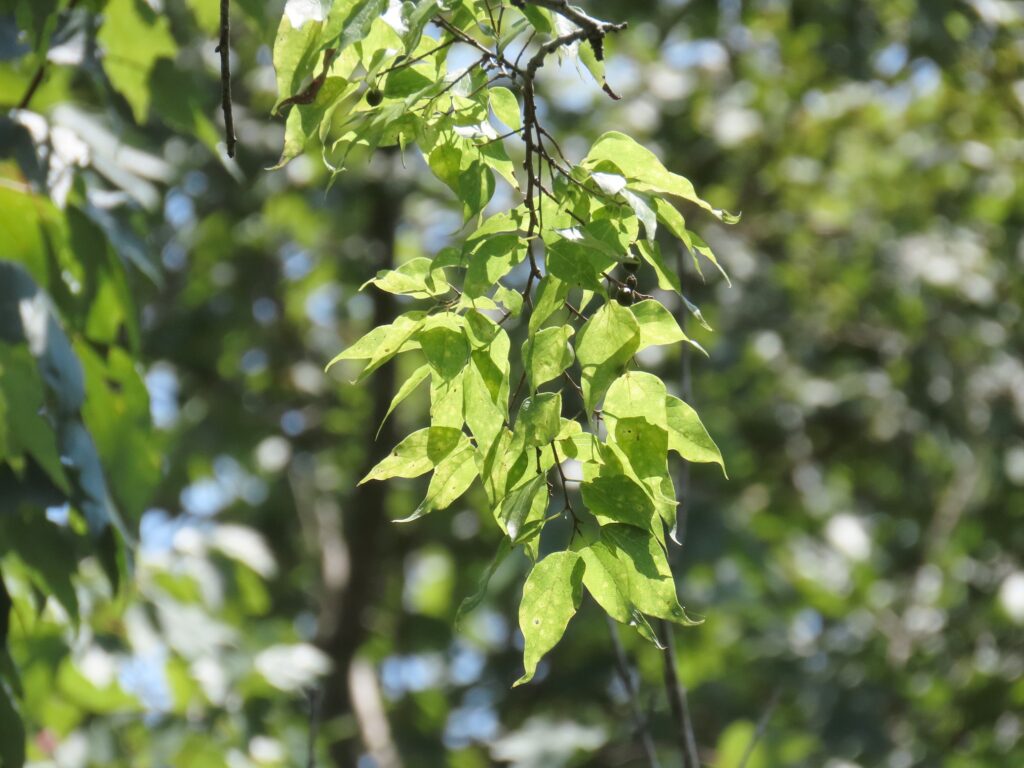
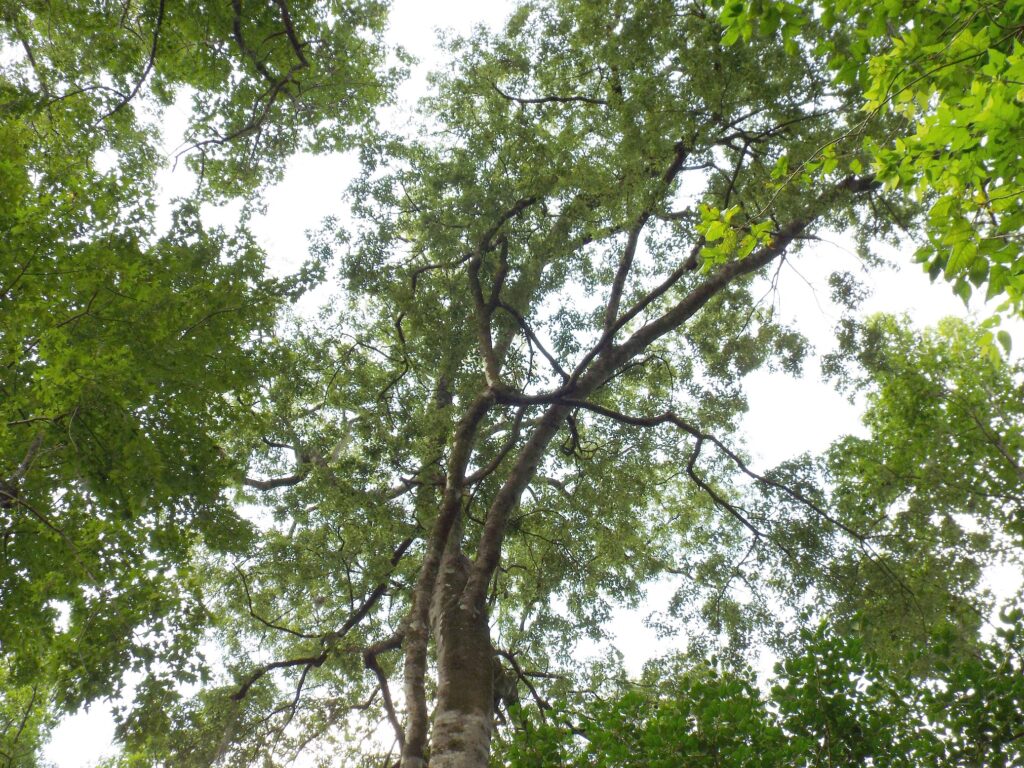
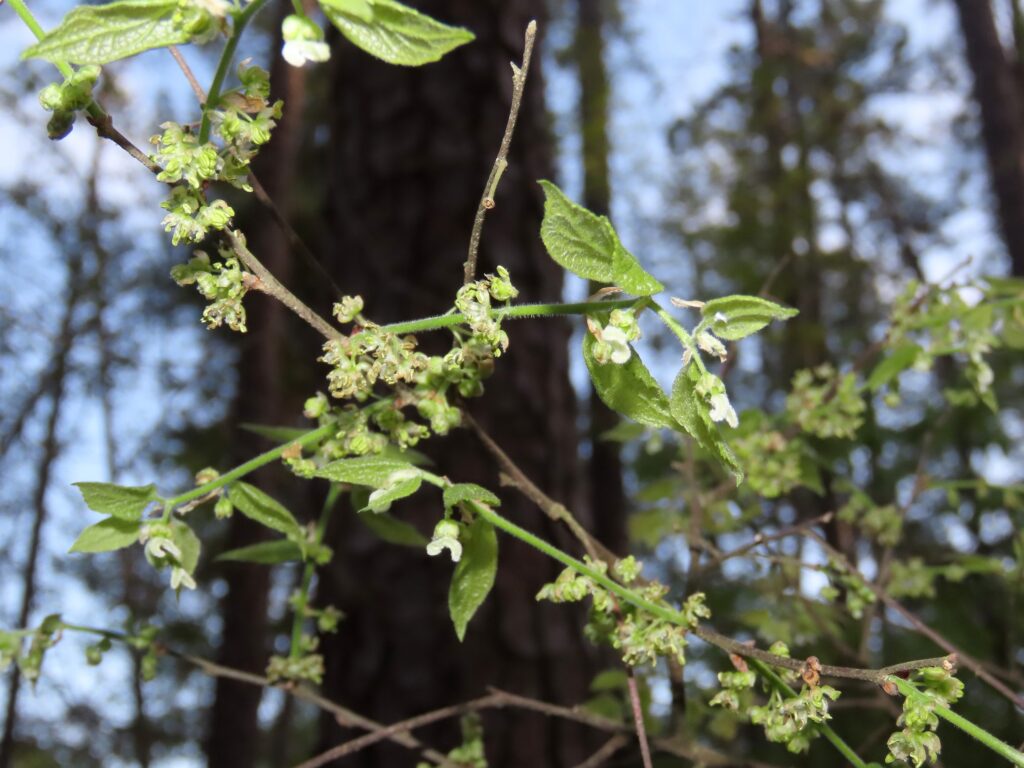
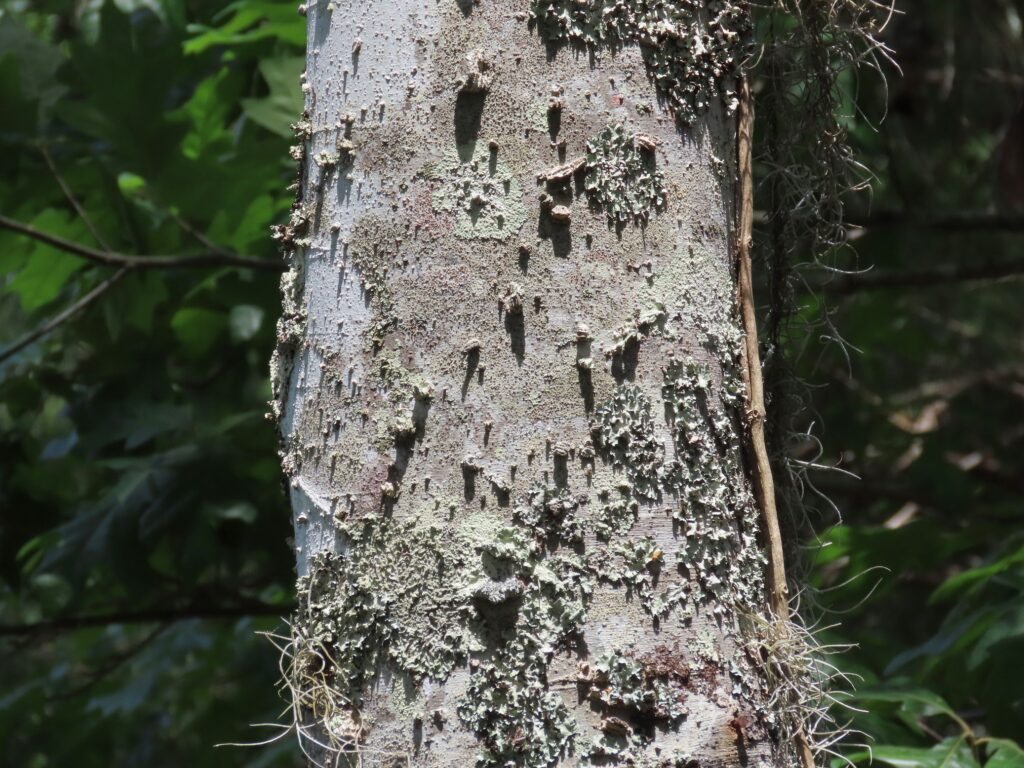
This week for Flora and Fauna Friday we have a lumpy, bumpy tree of the lowlands and Sea Islands, Southern Hackberry (Celtis laevigata).
Here in South Carolina we have three species of Hackberry. The Common Hackberry (C. occidentalis) and the Dwarf Hackberry (C. tenuifolia) are uncommon and rare respectively within the Lowcountry. However, the Southern Hackberry (C. laevigata), also called Sugarberry, can be found readily across all of South Carolina and most of the United States. Southern Hackberry prefers the fertile, moist soils of river floodplains on the mainland but is a highly adaptable tree able to grow and thrive on a wide array of soils. Here, on the young sandy soils of the Sea Islands, it is abundant most everywhere. It is even tolerant of salt spray and saltwater intrusion, finding itself at home in the maritime forests of our barrier islands, hammock islands, and even on rice field dikes and dredge spoil sites!
Southern Hackberry is an easily identifiable tree. It’s deciduous, emerald green leaves have a teardrop shape, round at the base with an elongate, pointed tip, as well as infrequent small serrations on the leaf margin. Its bark is a pale gray drifting to khaki and textured heavily with terraced corky projections. These corky warts can be barely visible or several inches long and over an inch tall, giving Hackberry trunks a look like little else in the Lowcountry! In full sun on sandy soils, Southern Hackberry grows incredibly fast, usually up to about forty feet high here on Edisto Island, with a crown just as wide of disordered branches pointing every which way. Because Hackberry is so fast growing, it has value as a timber species for cheap wood products like crates, veneer, and plywood. Its wood is fairly workable for carpentry and is very easy to steam bend, making it one of the most versatile and cost effective lumbers for building furniture here in the United States. It’s also adept as a shade tree in parks, yards, and suburban areas.
The Hackberry name apparently came from the Scottish word “hagberry”, a common name for the European tree species Bird Cherry (Prunus padus). Bird Cherry is a small tree found extensively in Eurasia which prefers wet areas and whose fruits are well used by birds. Our Southern Hackberry shares a similar significance to our native birds.
Many of our resident birds make meals out of the fruits of Southern Hackberry, better called by its other namesake of Sugarberry here. Although it produces drupes and not berries, these fruits are indeed a sugary snack sought after by fruit eating birds in winter and fall. They’re even edible by humans too. Southern Hackberry is also a host plant for two of our native butterflies, the aptly named Hackberry Emperor (Asterocampa celtis) and its ruddy cousin the Tawny Emperor (A. clyton). On that same note, Southern Hackberry is a “buggy” tree, it attracts a lot of insects. That also means it attracts a lot of birds! I’ve found Southern Hackberry to be one of the best trees to sit under during fall songbird migration to get good looks at migratory warblers, who come to feast upon the insects feasting upon the Hackberry. And while we’re talking about bugs, I need to touch on an invasive pest that has begun to pester our native Hackberries.
The Hackberry Woolly Aphid (Shivaphis celti) is as invasive pest from Asia with a perfectly succinct common name. These little aphids are coated from head to two in threads of blue-white wax which resembles wool and feed on the sap of our native Hackberries. The Aphid was first found in the United States in 1996 and has spread throughout the Southeast since. Thankfully, research indicates that an aphid infestation, even when prolific, has minimal impact to the trees themselves. It of course saps some of their vigor but appear not to cause any long term health issues. However, the “honeydew” dropping of these aphids (a mix of water, sugar, and wastes) coats everything beneath the tree in sticky sugar water, promoting the growth of molds which then stain leaves, trunks, sidewalks, cars, and anything else below. Thus, despite their adeptness for urban use as a hardy and fast growing tree, Hackberries are no longer being recommended for use in urban parks and residential developments due to the mess its pests bring with it. A real shame for this wonderful native tree.
And before I let you go, I have a pet hypothesis that Hackberry Woolly Aphids are actually a sought after food source by fall migrating Warblers, Vireos, and other insectivorous songbirds. These aphids are abundant and nutritious, Hackberries grow best in the hardwood forests these songbirds prefer to use during migration, resident “nuclear” species that attract migrant mixed flocks already make good use of this tree for its fruits, and I see a high diversity of migrating warblers in Hackberries in fall when the aphids are most abundant. Yet, I surprisingly found only a single piece of scientific research that references this idea, as an offhand hypothesis. [2009 Dobbs, Barrow, et al.] So there’s a free research topic for you budding young ornithologists out there!

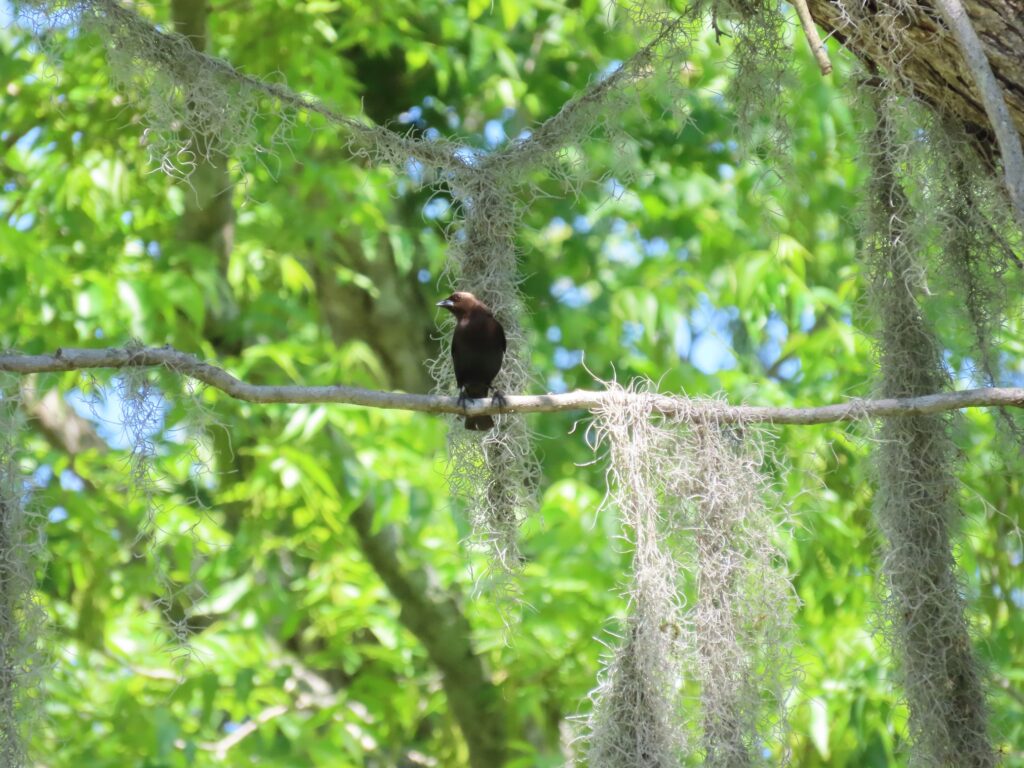
This week for Flora and Fauna Friday, it’s the orphaned best friend of bison, the Brown-headed Cowbird (Molothrus ater).
Brown-headed Cowbirds can be found across the United States and are here in South Carolina year round. In late summer and early fall, their numbers in the Lowcountry balloon as the birds begin to flock together, congregating in fields and under bird feeders to bulk up for riding out the winter. Male Cowbirds are an oily black across their entire body except for a chocolate brown head and throat. Females are a muted grayish-brown across the body with a pale-khaki throat. Both have a stout body just a bit smaller than a Cardinal, dark eyes, black legs, and a sharp, stout, triangular bill. Brown-headed Cowbirds are members of the Blackbird family, Icteridae, and they share many of this group’s common features, including black and brown coloration, a sharp bill, strong legs for walking along the ground, and a propensity for winter flocking. But, unlike many of our Blackbirds found here in the Lowcountry, Cowbirds are wholly an upland bird, staying away from swamps, marshes, and dense forests and instead preferring to call fields and prairies home.
Brown-headed Cowbirds were not always as abundant in the Southeast. Before Europeans set foot in the Carolinas, it’s believed Cowbirds resided almost entirely within the plains and prairies of the Midwest down to Texas. Here they hopscotched on the coat tails of the great Bison herds, feasting upon the smorgasbord of seeds scattered and insects stirred in their wake. Maybe they did the same with our Woods Bison in prairies of the Carolina Piedmont, but knowledge of such a thing has been dashed upon the rocky annals of time, forgotten much like the Wood Bison and very nearly the Piedmont prairie itself. However, hearsay of a hometown Cowbird aside, Brown-headed Cowbirds became abundant throughout the Southeast by the end of the 1800s. Here they swelled upon the ground with the groundswell of small farms that came to pepper the landscape after the collapse of the plantation economy, Cowbirds finding crop fields and cattle a suitable proxy for prairie and Bison. And so, here they dwell today, adding ball fields, suburbs, and birdfeeders to the list of places they’ll call home. Brown-headed Cowbirds, despite their originally specialized natural history, are quite the generalist otherwise. They survive on a wide array of foods and adapt quickly to new habitats. This adaptability makes sense if you consider the diversity of habitats encountered when chasing Bison herds across the landscape. The chaos of the nomadic Bison drive has also driven Brown-headed Cowbirds to adopt a fascinating nesting strategy, or maybe it’s better said they abandoned nesting, and their nestlings, altogether.
Brown-headed Cowbirds are obligate interspecific brood parasites. Female Cowbirds must lay their eggs in the nests of another songbird species. Be it Bluebird, Cardinal, Warbler, or Bunting, it matters little as they choose them all. Since female Cowbirds spend no time building nests nor feeding young, they dedicate themselves solely to laying eggs, often dozens a year, all plopped into another’s nest with the same love and tenderness as an orphan babe abandoned on a doorstep. Young Cowbirds take after their parents as a natural born homewrecker. A Cowbird egg hatches quickly and the blind featherless chick instinctually pushes its unhatched adopted siblings out the nest to clatter to the ground below, often leaving themselves as the only hungry mouth left to feed. Hormones are one heck of a drug, so the adopted parents will more often than not raise their brown-headed step-child as their own, even continuing to feed it once it fledges and leaves the nest. As summer fades into fall Cowbirds begin to congregate. Breeding pairs join together into small flocks and as they move through the landscape singing their high, metallic, bubbling rattle of a song, these notes resonate in the hearts of their spawn scattered across the lands, calling them into the ranks of the huge winter Cowbird flocks to be with their kin.
As you can imagine, the peculiar lifestyle of Cowbirds doesn’t paint them in the best of lights nor has it curried them much favor in common culture, aside from the curiosity and study of naturalists. Instead, their life history has brought them scorn from an unexpected demographic. It’s not the typical persecution of wildlife born from a moral imperative ascribed within a parable since over-anthropomorphized and taken literally instead of as allegory. No, it arose from a real and still smoldering conflict between Cowbirds and conservationists, the unlikeliest of bitter enemies, ornithologists pitted against native bird.
As previously mentioned, Brown-headed Cowbirds are generalists who have adapted well to the modern world. They are prolific brood parasites and, thus, de facto nest predators in the supreme. At the same time that Cowbirds have flourished and their populations boomed, other species have suffered and been pushed nearer and nearer to the brink of extinction. Cowbirds unwittingly have become a part of that pressure shoving some species’ populations towards a precipice.
In South Carolina, Cowbirds are not an existential threat to any of our breeding bird populations. Although they parasitize Eastern Bluebirds, drawing the ire of doting landowners who hang nest boxes, and occasionally their kids eat an unlucky Yellow-throated Warbler couple out of house and home, the impacts they have on our native bird populations here are negligible in the grand scheme of things.
However, out of state, Cowbirds have long been implicated heavily in the declines of a handful of several endangered and threatened songbird species, such as the Kirtland’s Warbler in the Midwest and Least Bell’s Vireo in the Southwest, to the point where the United States Fish & Wildlife Service permitted the mass culling of Brown-headed Cowbirds in the 1970s to mitigate their impacts on the nest success of these endangered species.
Although Brown-headed Cowbirds are native to the United States, the conditions that are benefitting them are all man made. Thus, the negative impacts they’re having on other native songbirds are yet another unintended byproduct of man’s meddling and misdoings in the natural world. Nonetheless, the blame for some bird species declines is more easily placed at the feet of a bi-colored brood parasite by the hands of those that shattered the natural landscape those declining birds relied upon, rolling out the red carpet for Cowbirds.
This week for Flora and Fauna Friday, we have a pair of native plants gone ornamental, Black-eyed Susan (Rudbeckia hirta) and Goldsturm (R. fulgida).
Black-eyed Susan is a wildflower found throughout South Carolina and practically all of the eastern United States. Goldsturm is less abundant and widespread but not an uncommon sight in certain regions of the Lowcountry. These two wildflowers spend most of their days growing as a basal rosette, a whorl of leaves atop the soil scavenging nutrition from below and sunlight from above. They prefer to grow in partial shade along forest roads and margins here in the Lowcountry of South Carolina. Come their summer show time, both species begin to grow stems reaching up to about knee-high. These stems bear stunning two to three-inch wide flowers, ringed in a dozen or so golden-yellow petals around a raised ebony-brown disk. These flowers are the quickest way to tell these sister species apart. Black-eyed Susan blooms at the dawn of summer in May and June. Goldsturm conversely blooms at summer’s sunset in August and September. Goldsturm’s flowers sometimes bear a splash of cinnabar-red at their base surrounding the central disk. These two wildflowers differ in a few other ways, most prominently Black-eyed Susan’s leaves and stems are densely hairy, whereas Goldsturm is only a little hairy. Black-eyed Susan tends to grow a bit taller as well. Most significant to us gardeners, Goldsturm is a long-lived, spreading perennial. Black-eyed Susan doesn’t spread through its roots and is only a short-lived perennial or, more often than not, behaves as an annual or biennial.
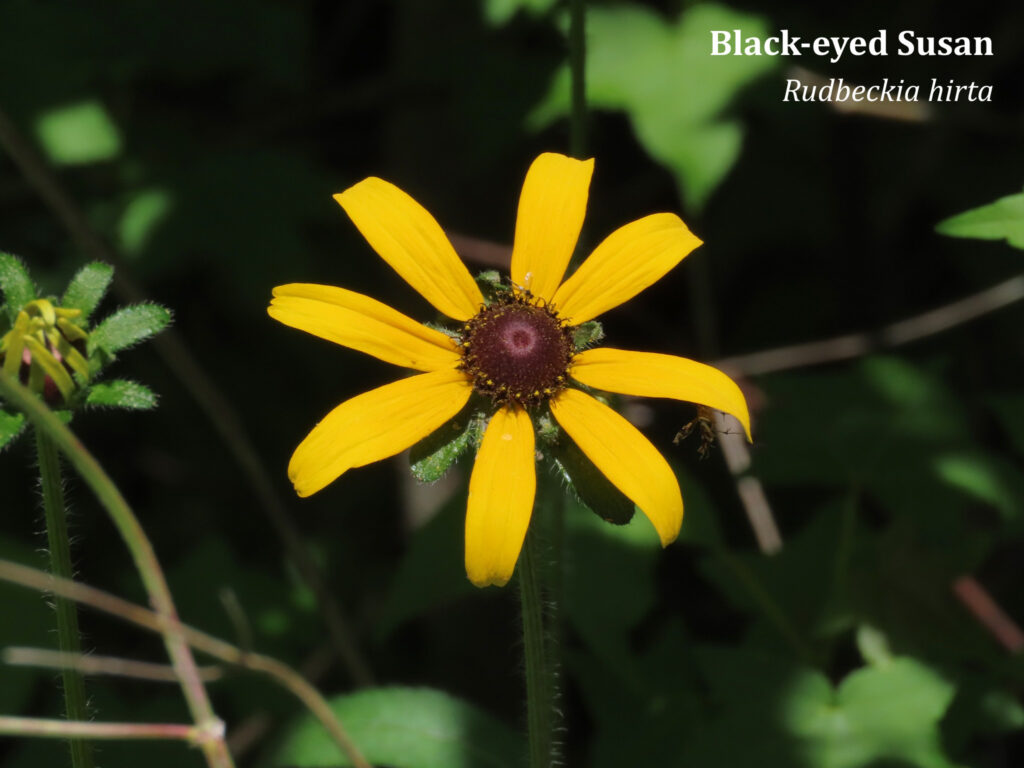
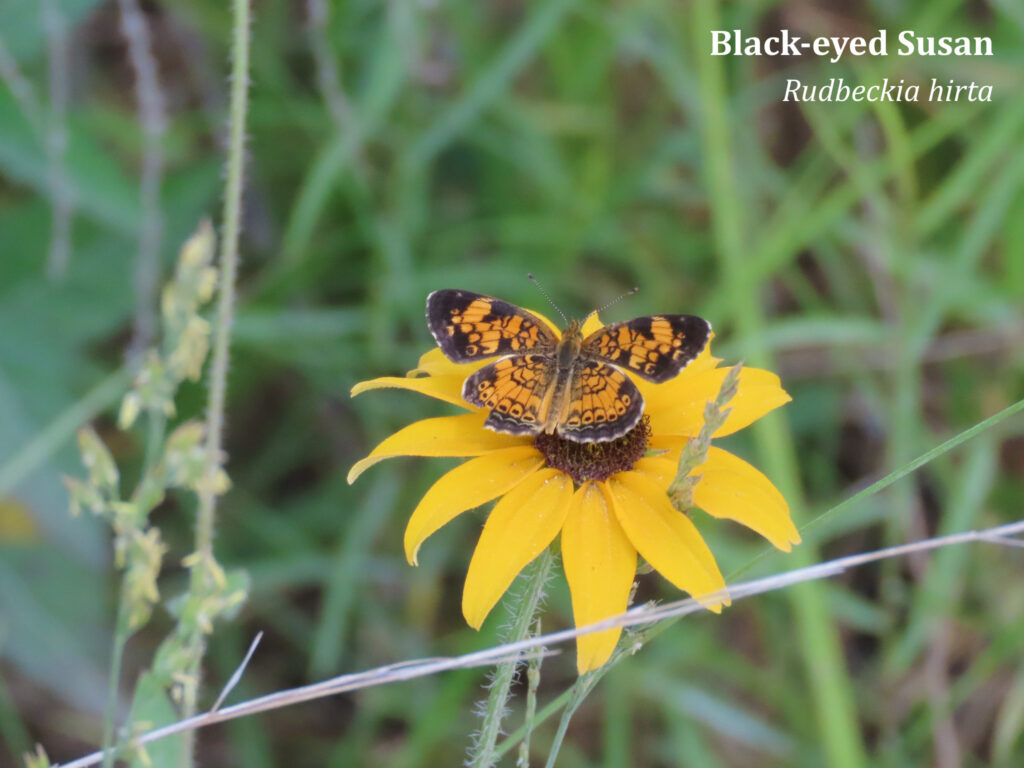
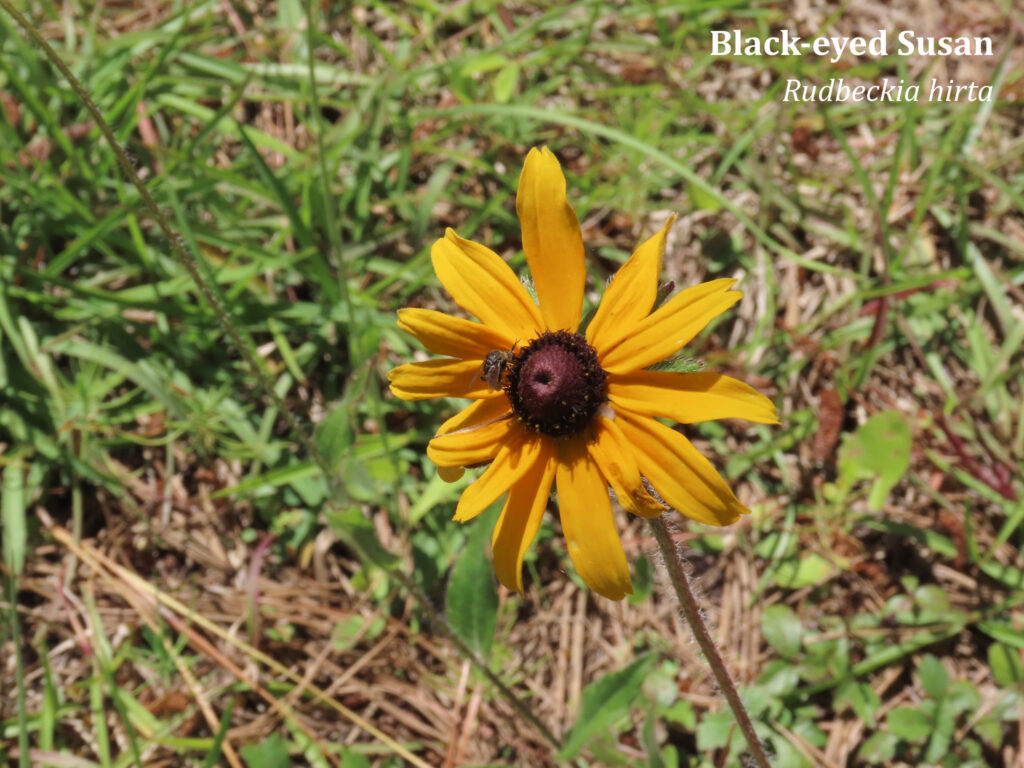
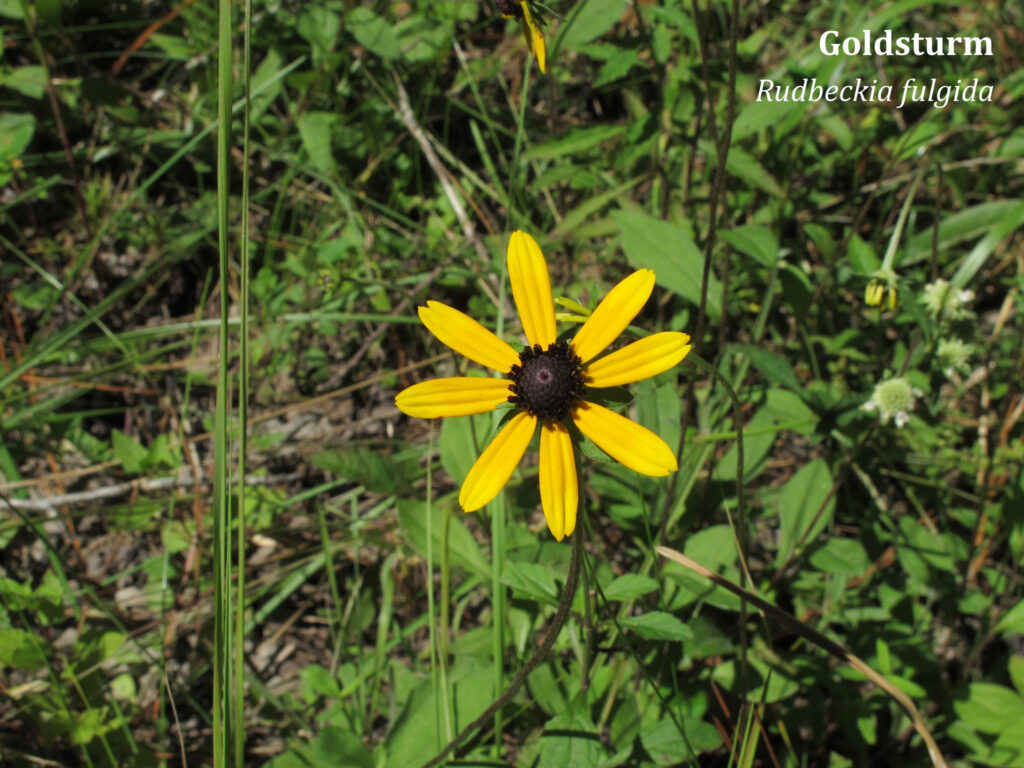
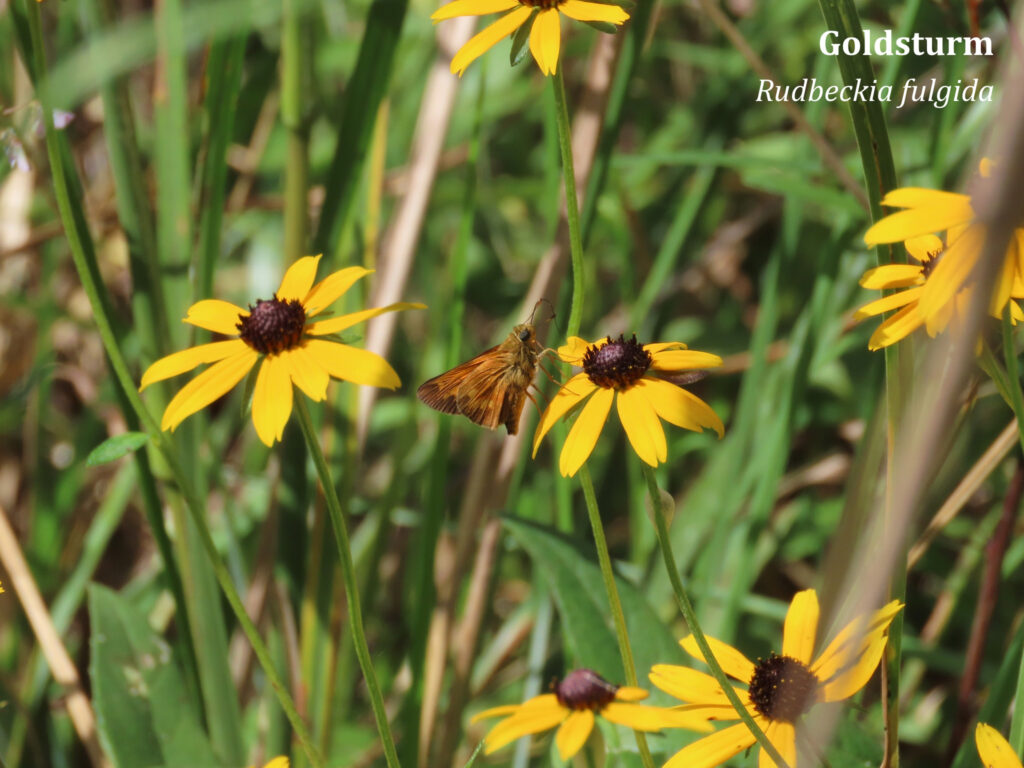
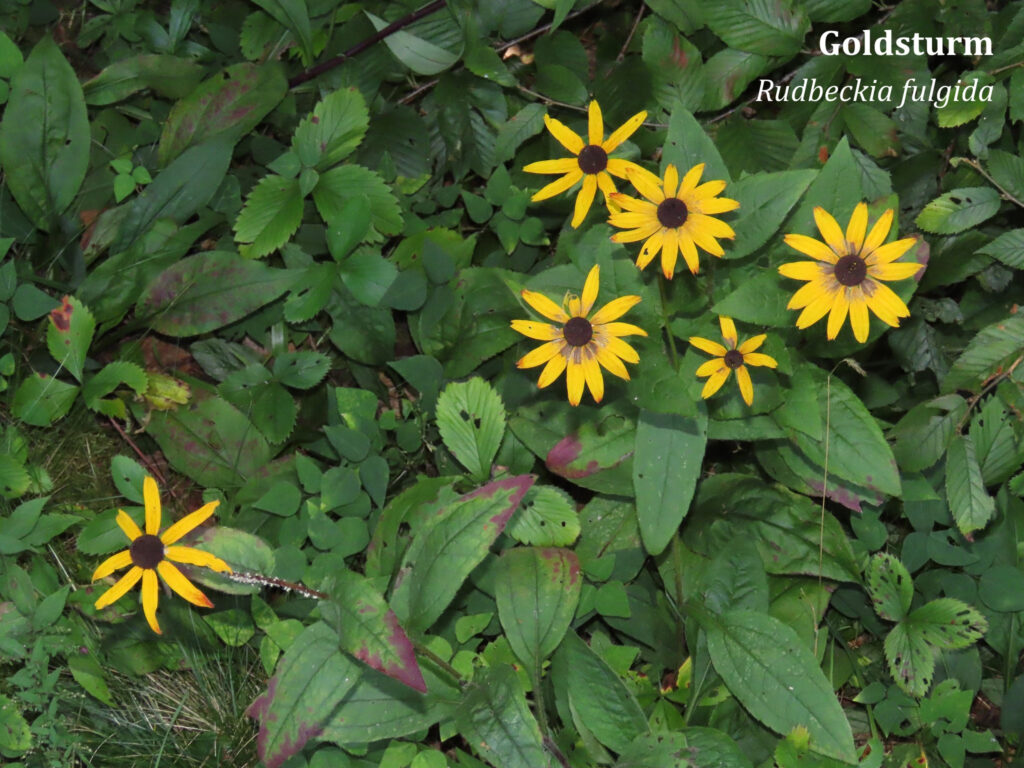
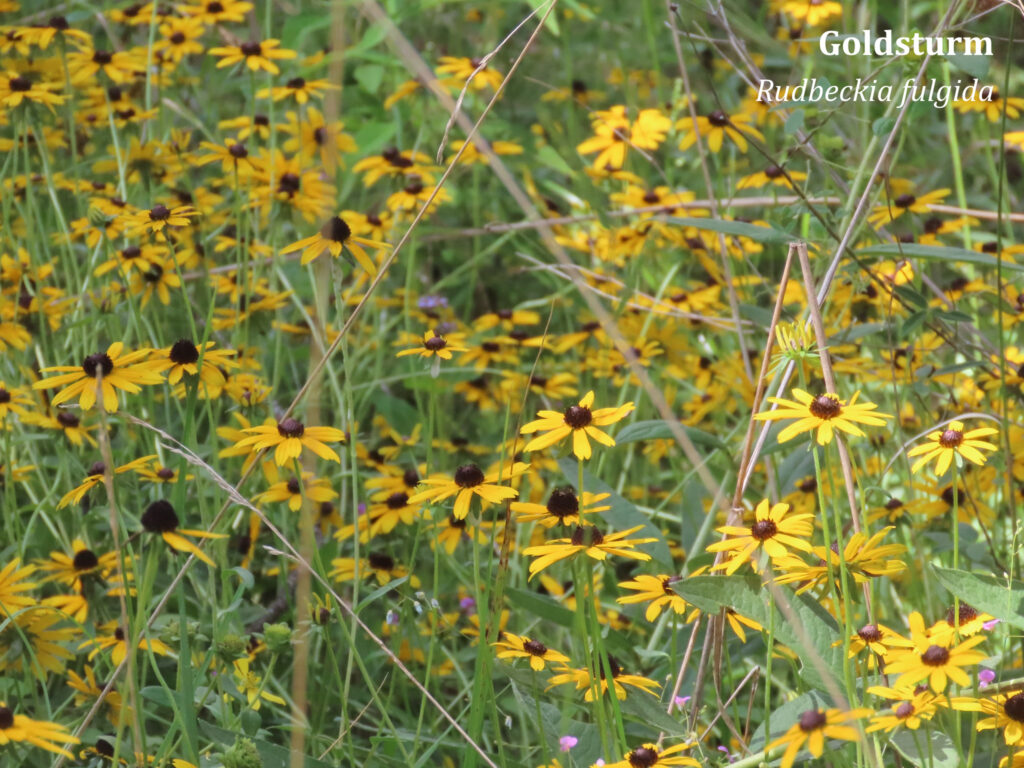
Both Black-eyed Susan and Goldsturm are ornamental flowers known well by every gardener. Yet, you may not have known that both are native wildflowers. Both species grow wild here in the Palmetto State and, several centuries ago, their seeds were collected, brought over to Europe, and selectively bred by horticulturalists to create the modern ornamental cultivars we see sold widely across the world. However, for those interested in planting native plants for pollinators, these ornamental varieties are often inferior to our wild ecotypes. An ecotype is not quite a subspecies nor is it even a distinct variety of a plant. It’s a population originating from within the same ecoregion as where you intend to grow that plant. Using ecotypes in habitat restoration and wildlife gardening is a best practice when possible. Ecotypes are best adapted to your local soils, climates, pests, and pollinators. So they tend to grow the best, with the least care, and while providing maximum wildlife benefit. Goldsturm and Black-eyed Susan are great examples of why choosing an appropriate ecotype is a wise decision when gardening for pollinators. Many of the ornamental Rudbeckia are bred to do well in well-tended Mid-Atlantic and European gardens and there they produce profuse and showy flowers at the expense of all else, including their nectar and pollen production. This means they can’t compete in a natural habitat, don’t stand up well to our sweltering southern climate, have low concentrations of phytochemicals that ward off pests and deer, and produce very little nectar for butterflies, scant pollen for bees, and consequently yield fewer seeds for birds to feed on. On the flipside, our unmodified native ecotypes can tolerate pests and hot summers as they elbow their way into a natural setting, all while supporting a menagerie of native wildlife.
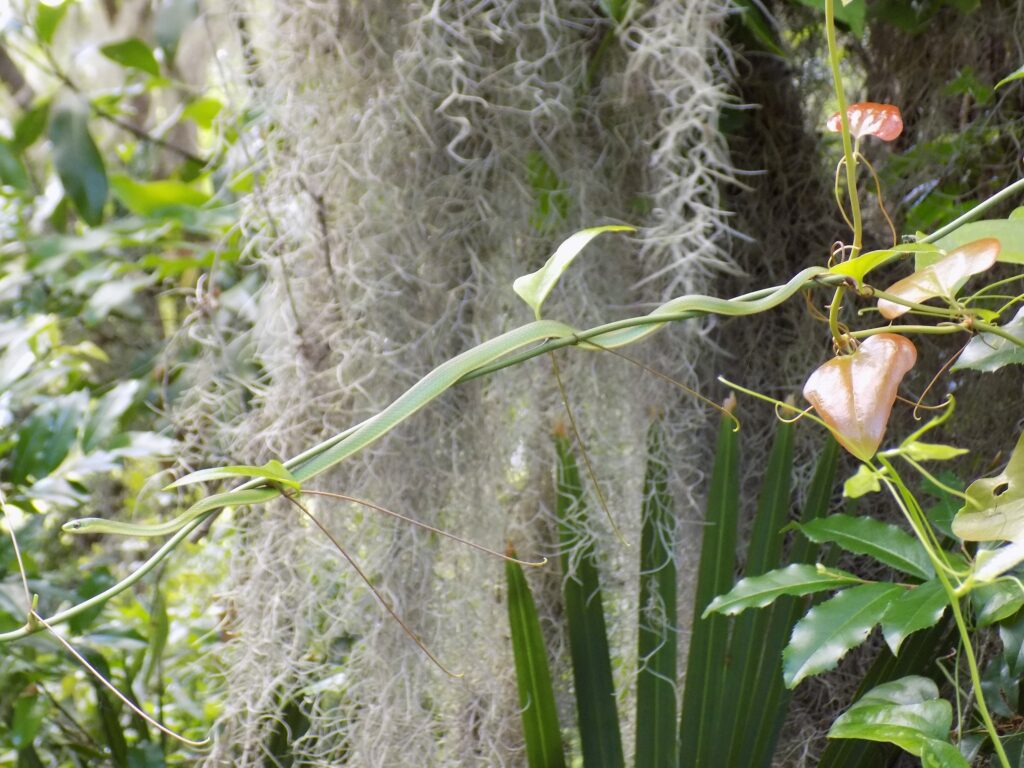
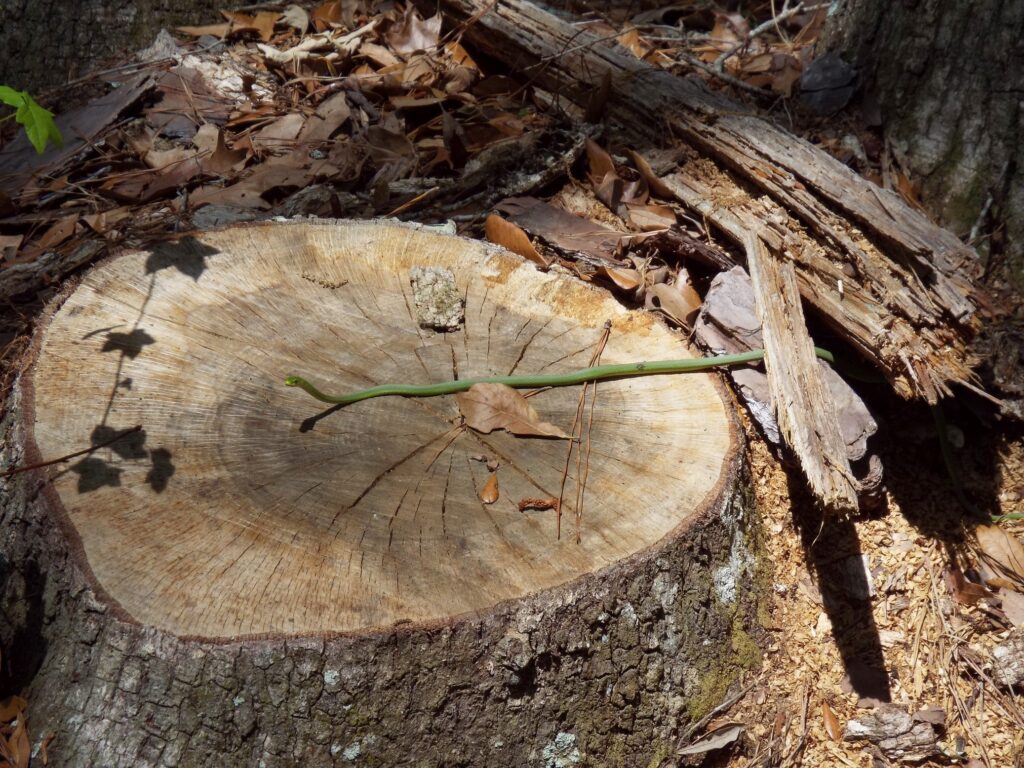
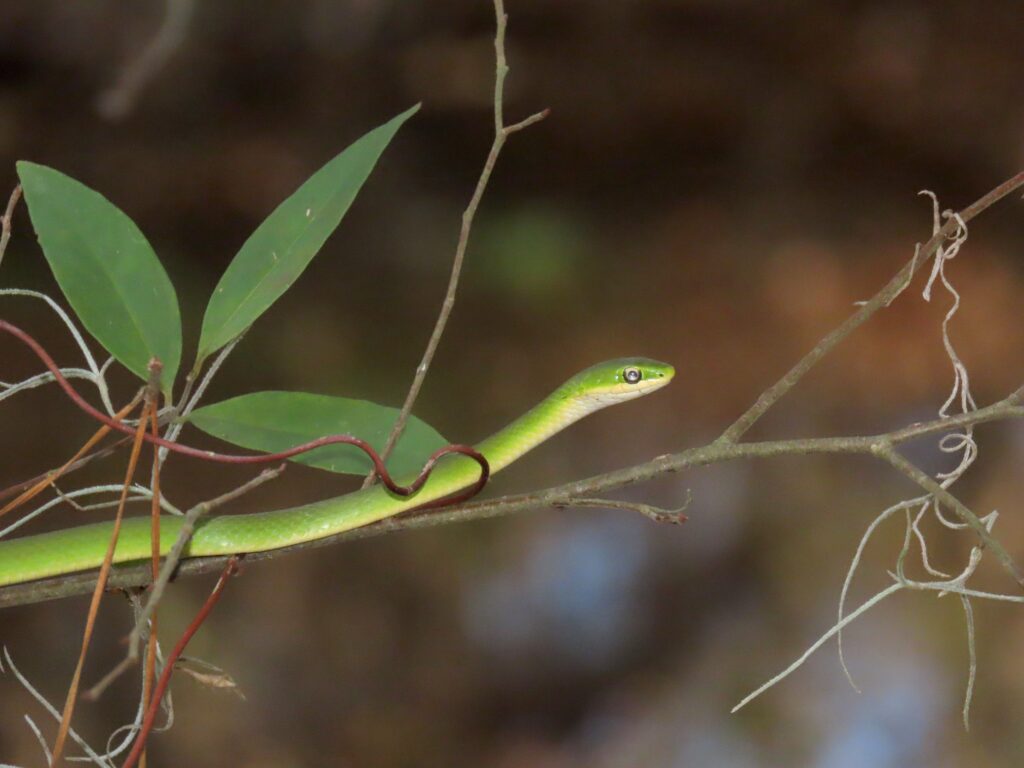
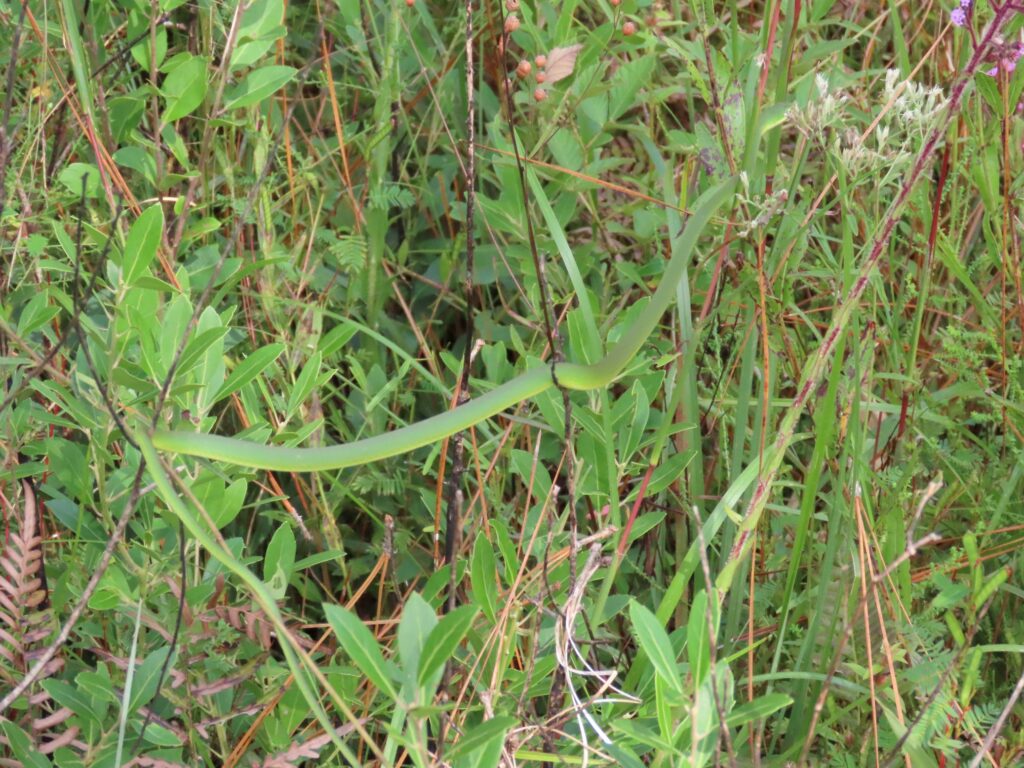
This week for Flora and Fauna Friday we have lean, mean, green, tree climbing machine, the Rough Green Snake (Opheodrys aestivus).
The Rough Green Snake is found throughout the Southern United States and all of South Carolina. It’s an unmistakable snake here, being thin as a finger for two-feet or more in length and a uniform emerald-green above with straw-yellow below. In the Appalachians Mountains, the Smooth Green Snake exists instead, a species which looks nearly identical except, it’s smooth! The Rough Green Snake is conversely rough, having keeled scales with vertical ridges that run along their length.
The Rough Green Snake is an arboreal snake, living almost its entire life in the tree canopies of hardwood forests and the brushy thickets along rivers and forest margins. Here they feed on invertebrates including cicadas, katydids, and caterpillars, as well as anoles and tree-frogs. Strangely, they aren’t known to raid bird nests for eggs, despite having the climbing chops to reach any woodland bird’s nest. Given their slender build, this live-and-let-live relationship between Green Snakes and birds may be an adaptation by the snakes to avoid unceasing harassment from sharp-eyed birds with equally sharp bills. Rough Green Snakes are not venomous nor do they constrict, they simply grab and swallow their prey whole. Despite being very common, Green Snakes are hard to spot, on account of them being green and living at the tops of trees. Yet, they frequently visit bushes closer to eye level and slither down to the ground to cross roads, lay their eggs, and move from tree to tree. Rough Green Snakes are prey for most any predator that finds them, particularly birds. Notably, they are a favorite food of Mississippi and Swallow-tailed Kites and it’s not an uncommon site to see a Kite circling overhead with a limp lime-green line trailing behind it, snacking on a snake-flavored Slim-Jim one bite at a time. When confronted, Rough Green Snakes freeze in place, relying on their camouflage to hide them in plain sight. They’re very adept climbers but not very fast in a straight line race for cover.